I came to the Mikumi National Park in Tanzania on a day trip from Zanzibar. This was possible thanks to the fact that I flew from Zanzibar to the national park by plane together with 4-5 other people who, as members of the group I was with during this trip, signed up for the safari.
After the second encounter with the lions, the people in my group were eager to see the leopard as well. The guide/driver said that they are extremely rarely seen, but probably in anticipation of a good tip, he got off the main roads several times and driving across the savannah in his car, he went to some parts where it could be assumed that leopards hid during the day.
Although I certainly wouldn’t have minded seeing a leopard, I could not quite understand my companions because based on their questions (are there tigers/jaguars/cougars in the national park?), it was quite clear that they did not have a clue about the big cats. I guess they just liked the idea of being able to brag to their friends back home that they had seen something “rarely seen.” This has become a very common motive for human behaviour in today’s world.
In any case, at one point the driver/guide saw a young female elephant standing calmly in the shade with her calf and then he decided to drive us closer to them.
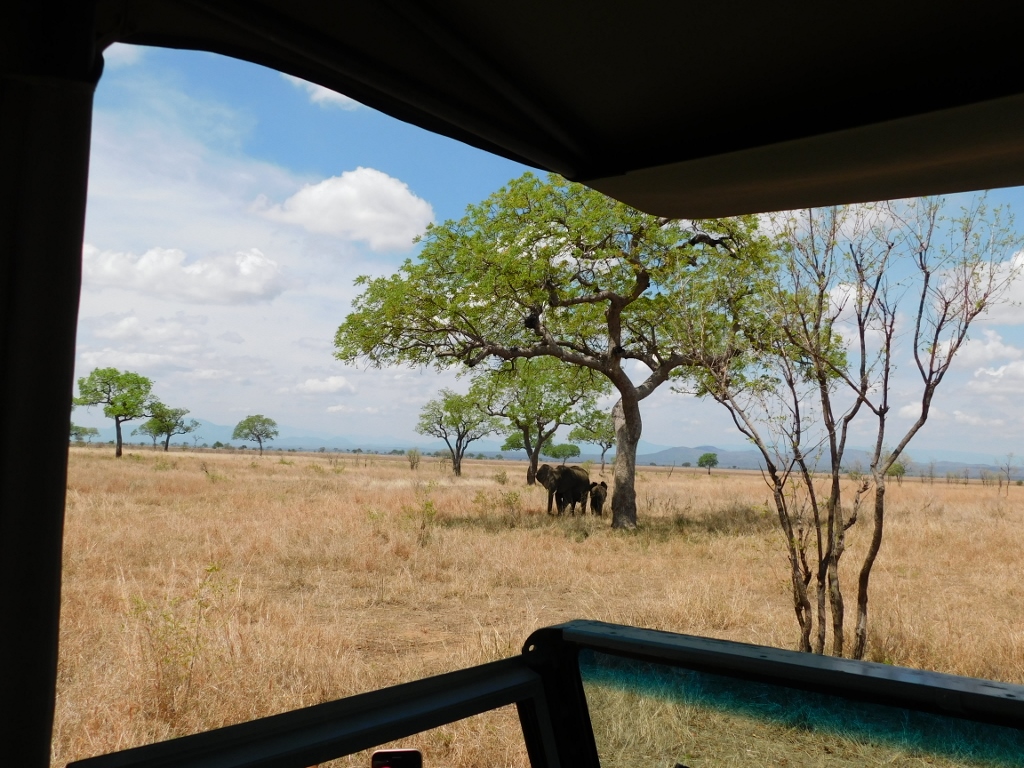 A female elephant with her calf
A female elephant with her calf
I must admit that I liked this at first sight, because I wanted to see and photograph the elephant and her baby from a closer distance. But as our vehicle approached, the elephant and her calf started to move away from us.
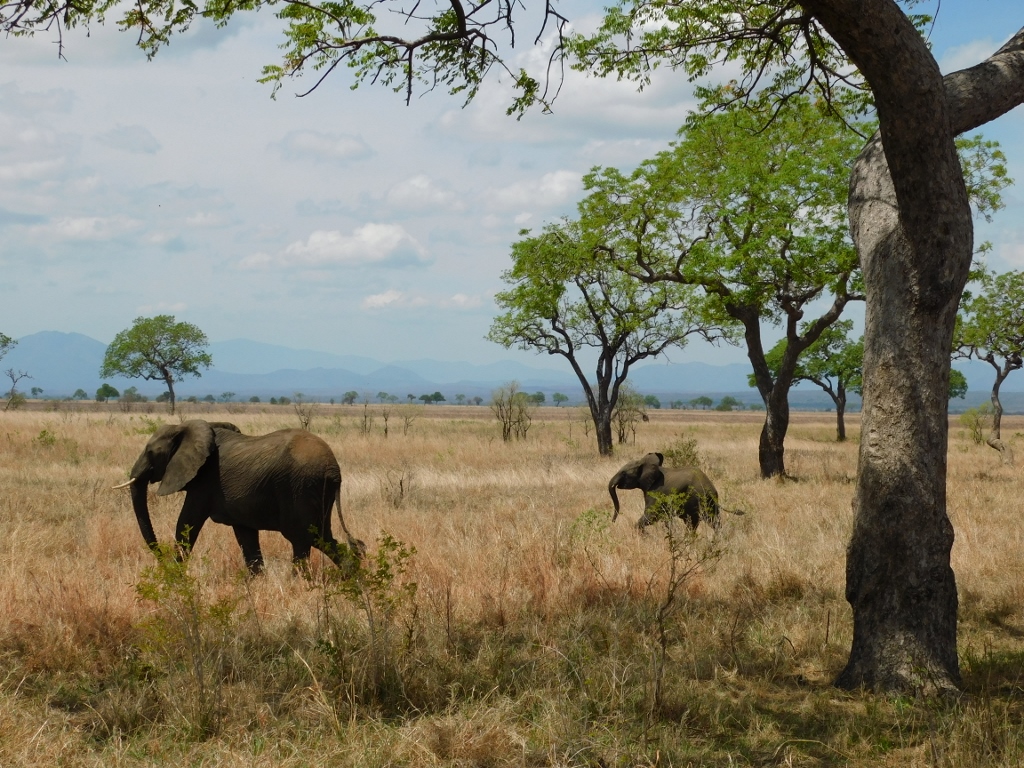 A female elephant with her calf
A female elephant with her calf
The driver/guide then skilfully positioned the vehicle on the other side and the elephant proceeded practically to run away from us along with her cub trying to catch up with its anxious mom.
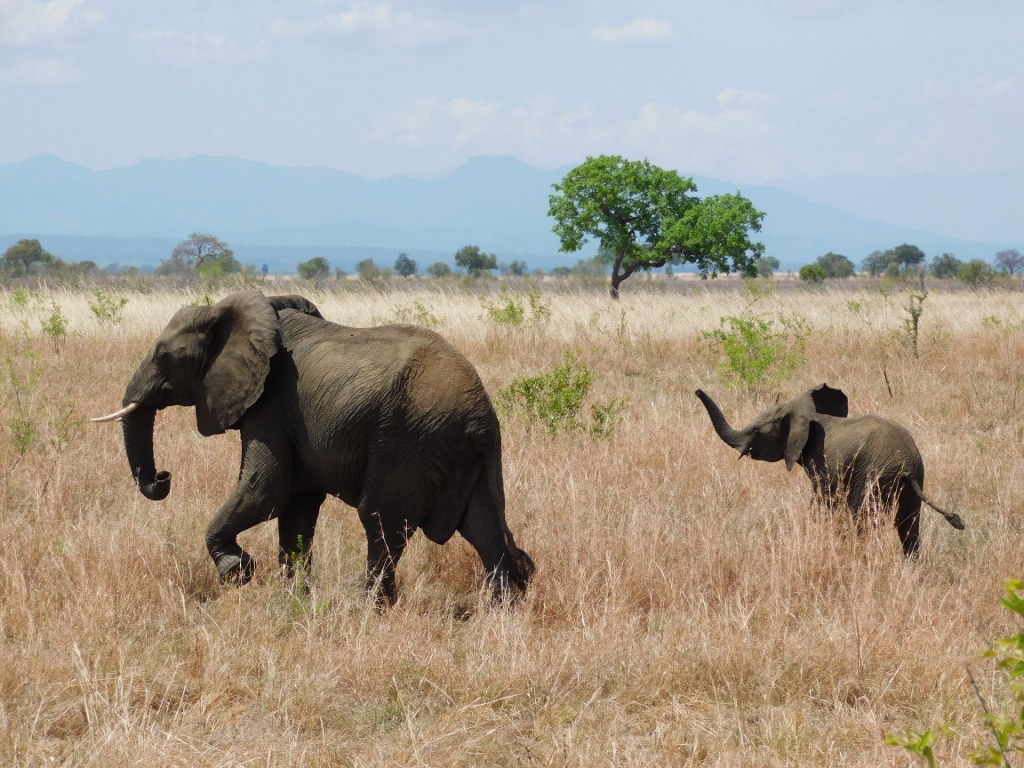 A female elephant with her calf
A female elephant with her calf
I didn’t like this at all anymore. After all, it would be like if a young mother of Homo sapiens who took her baby out for a walk were surrounded by some unknown and potentially aggressive people.
At one point, the elephant stopped and turned towards us, the cub hid behind her, and then the caring mother honked through her trunk and seemingly started to charge in our direction by sort of stomping one leg towards us. Someone in our car screamed, I was very displeased and started grumbling about how this amounted to animal abuse, and the driver/guide then gave up the chase.
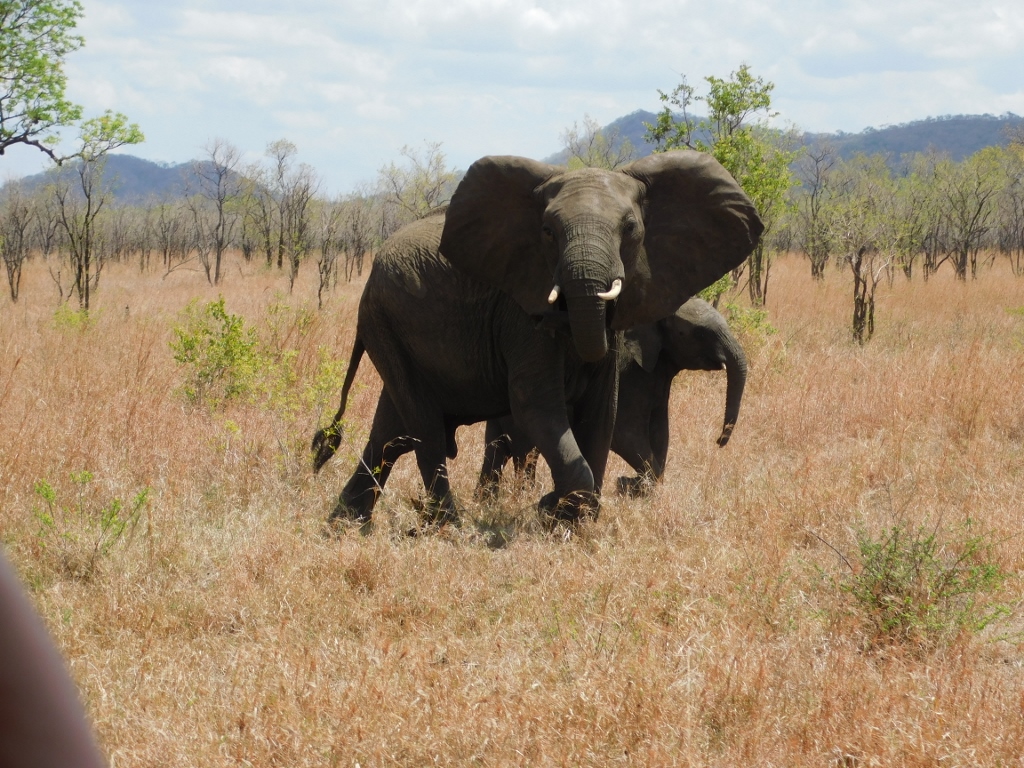 A female elephant with her calf
A female elephant with her calf
The mother elephant and her baby could now calmly go to another shade.
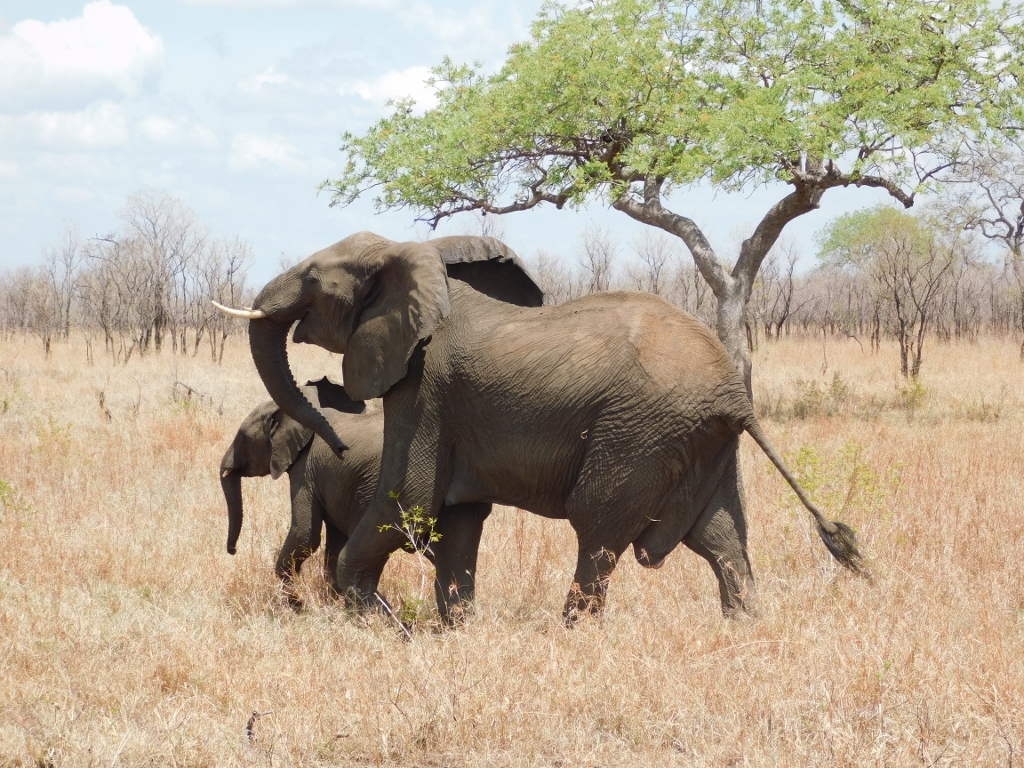 A female elephant with her calf
A female elephant with her calf
As we headed back to the main road, a woman who was among my companions (the one I have mentioned before and who wanted her music played loudly while on safari!!??) and who was mostly talking the whole time (she just could not shut up) for some reason, unclear to me, suddenly screamed in a piercing voice: “Hakuna matata!” I guess she was scared of that elephant, so now she channelled the excess cortisol by shouting a phrase in Swahili that means “no problem.” This was now too much for me after the pestering of the elephant and it absolutely bothered me, so I snapped at her saying that she shouldn’t scream here and that she could go to the zoo for such purposes. I want to say that there was a scene here and that there is no heaven on earth – there are problems everywhere. We didn’t talk for the most part until the end of the trip, but it suited me that way. On the other hand, I realised why I don’t like going in groups – people often get on my nerves.
Anyway, a little further on, we saw some giraffes again in the shade of the trees. They were also trying to cool down there by avoiding the open space and the strong sun.
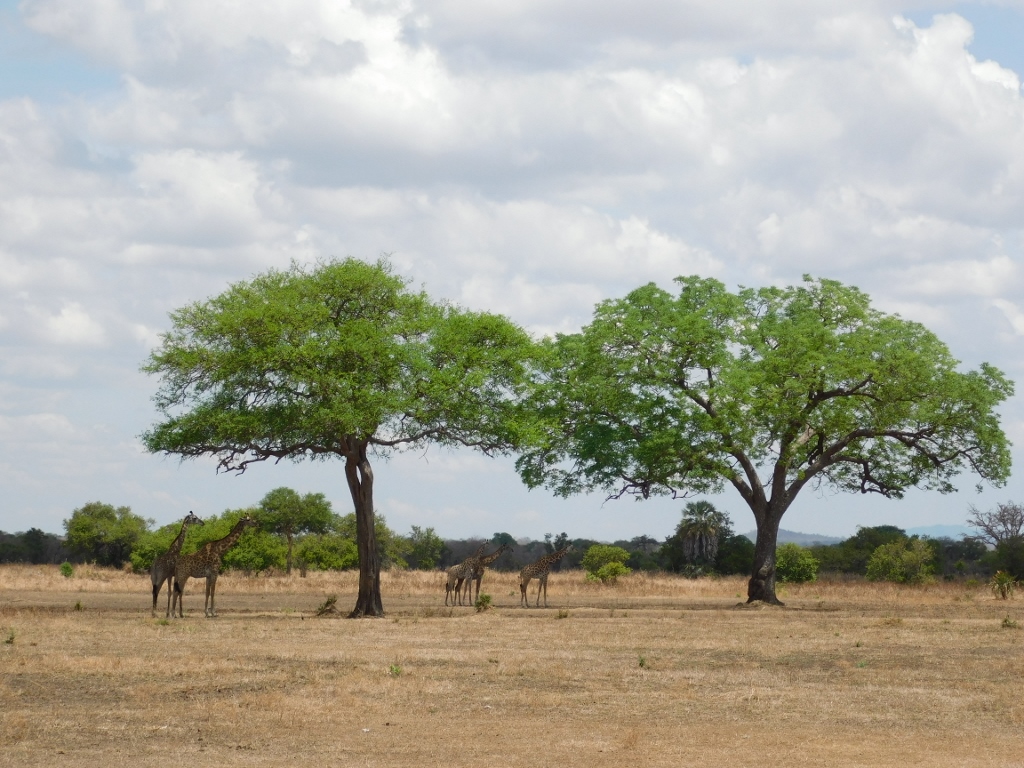 Giraffes in the shade
Giraffes in the shade
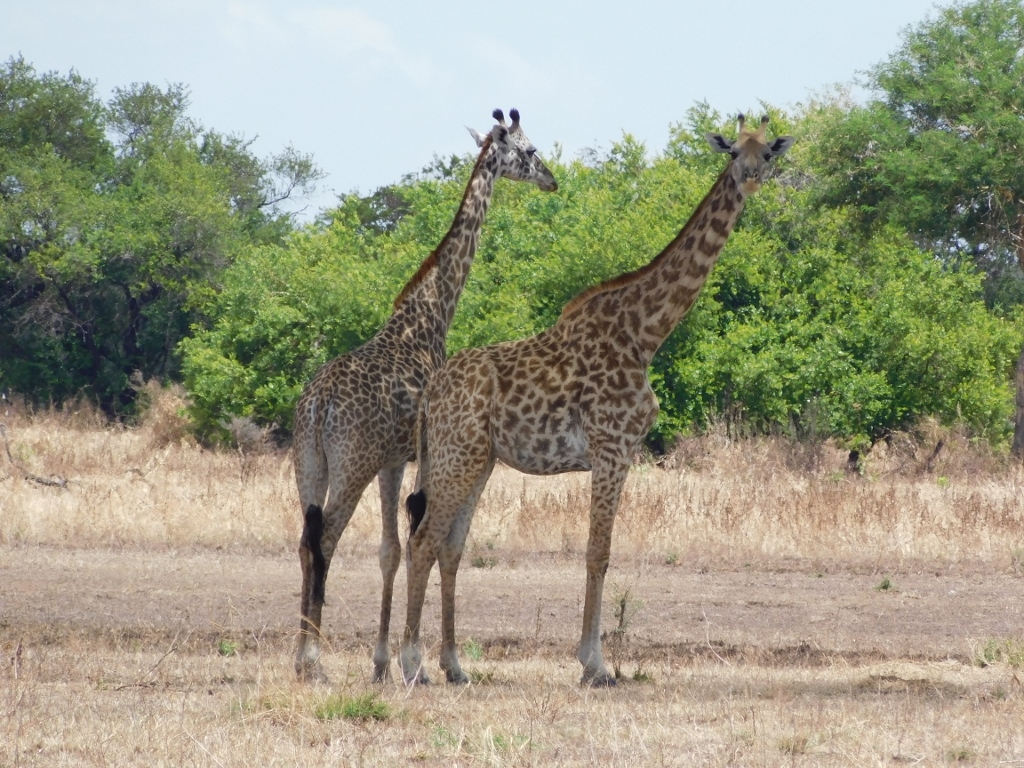 Giraffes in the shade
Giraffes in the shade
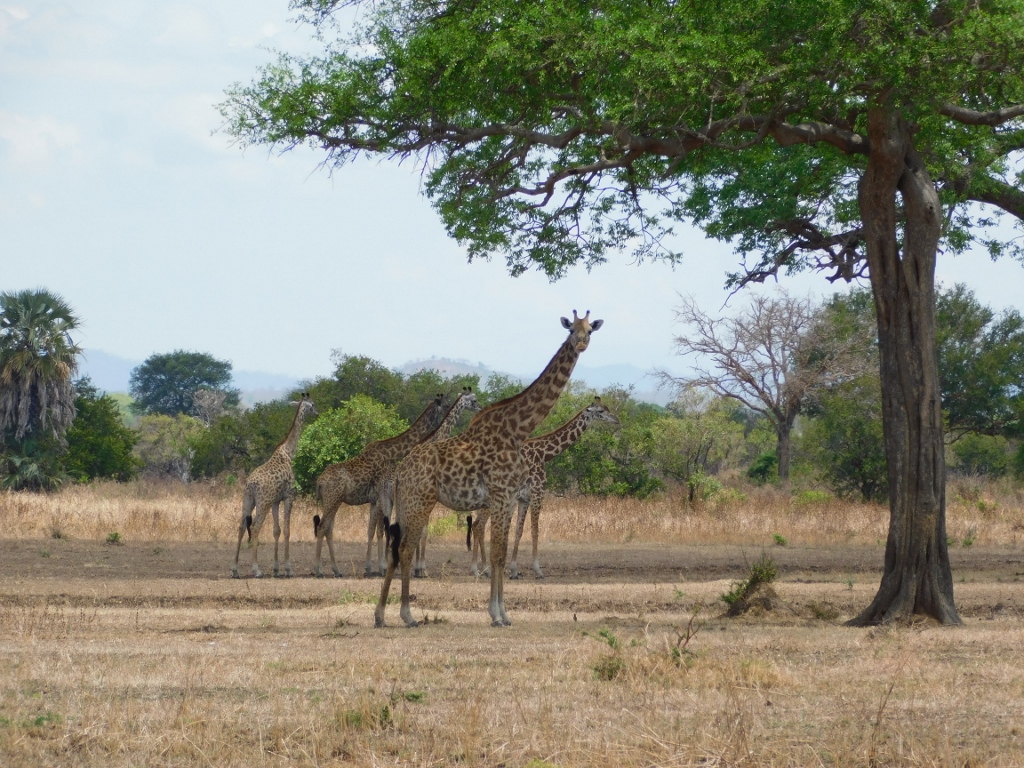 Giraffes in the shade
Giraffes in the shade
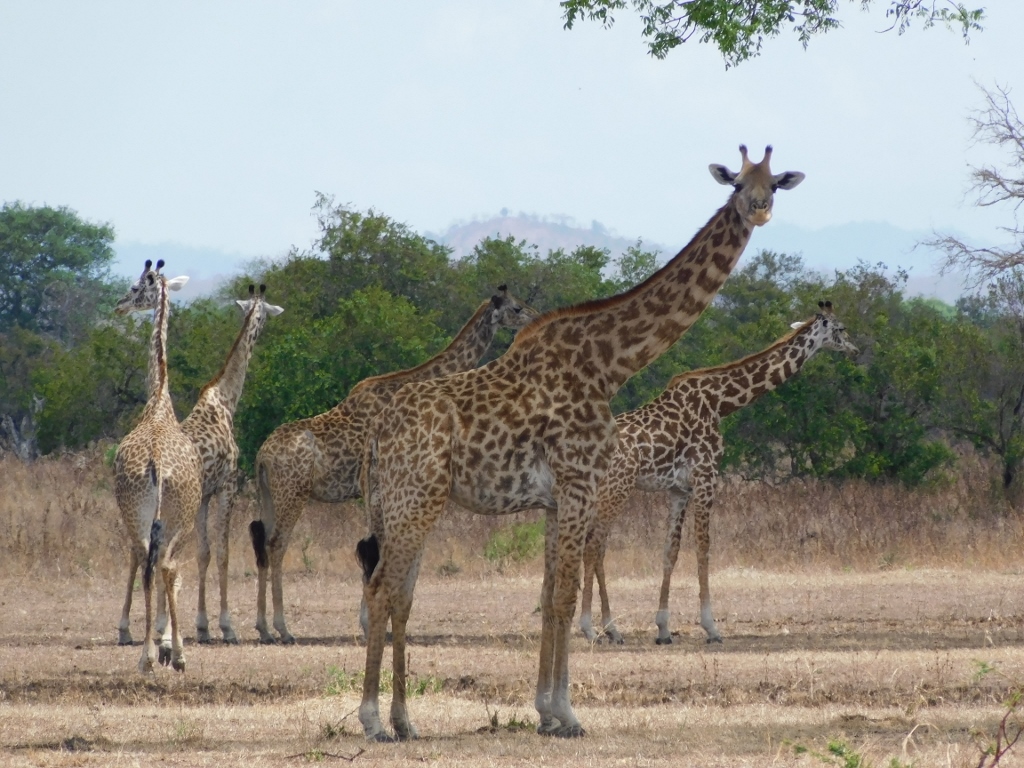 Giraffes in the shade
Giraffes in the shade
When I was choosing which photos to post here, I just couldn’t decide on one or two. Although very similar, they are all very nice and dear to me.
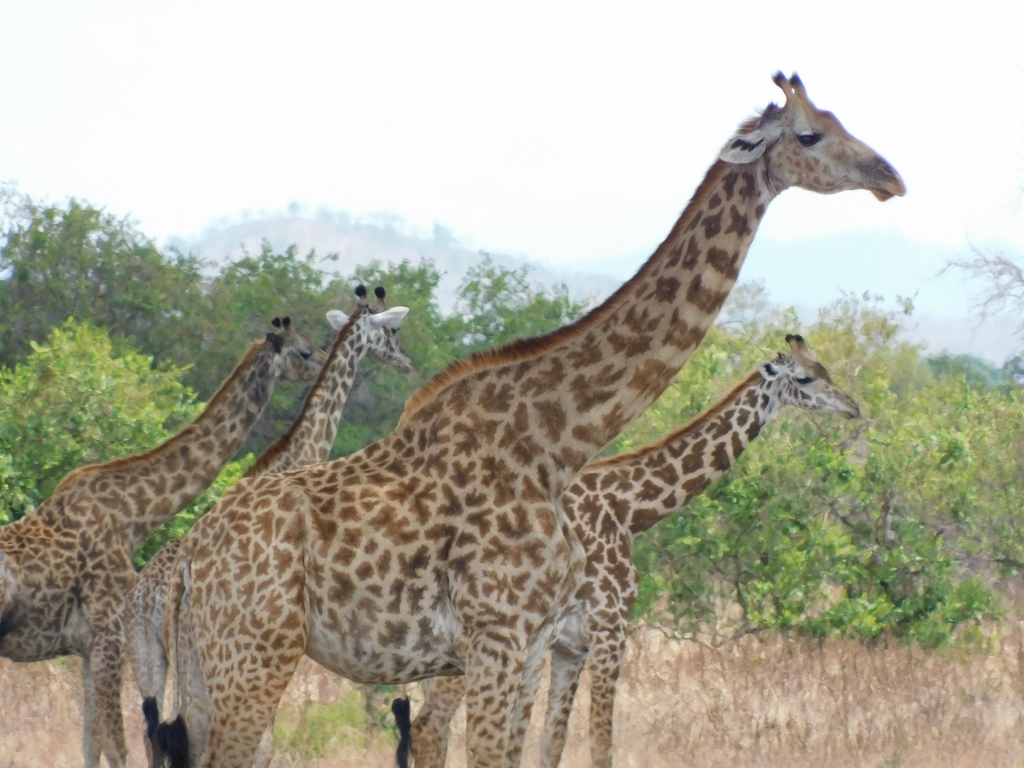 Giraffes in the shade
Giraffes in the shade
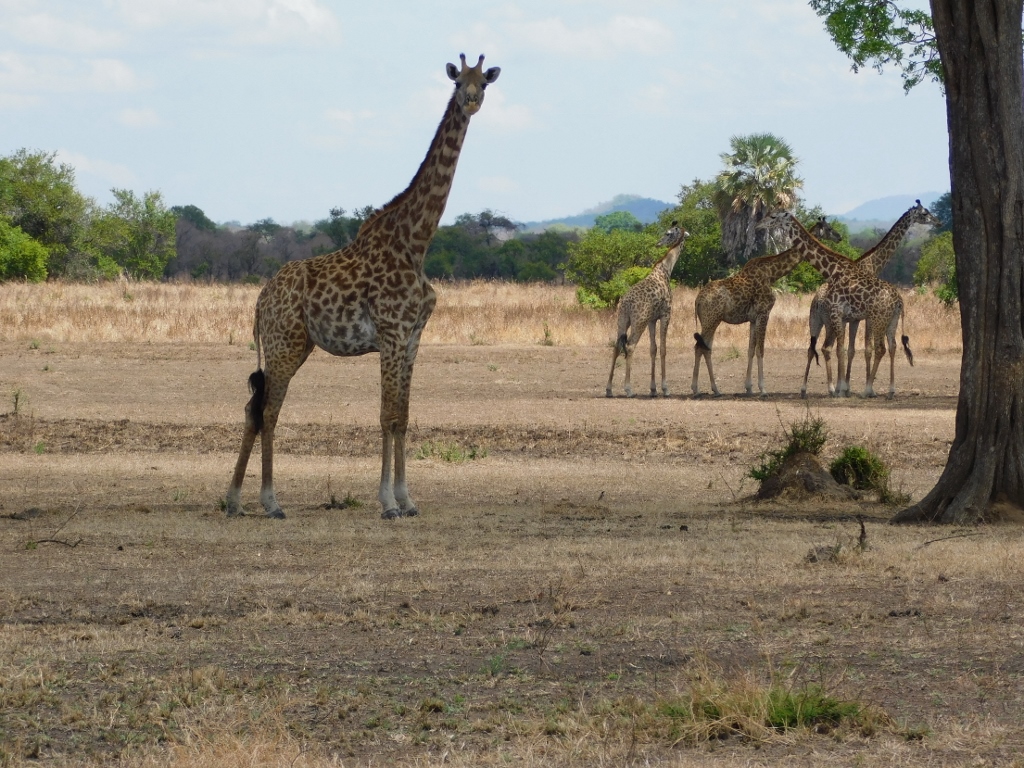 Giraffes in the shade
Giraffes in the shade
Then the driver/guide started to get too close to the animals again, but they didn’t like it one bit, so they just started running away. Perfect! I took photos and videos, but I was actually very glad that the giraffes ran away.
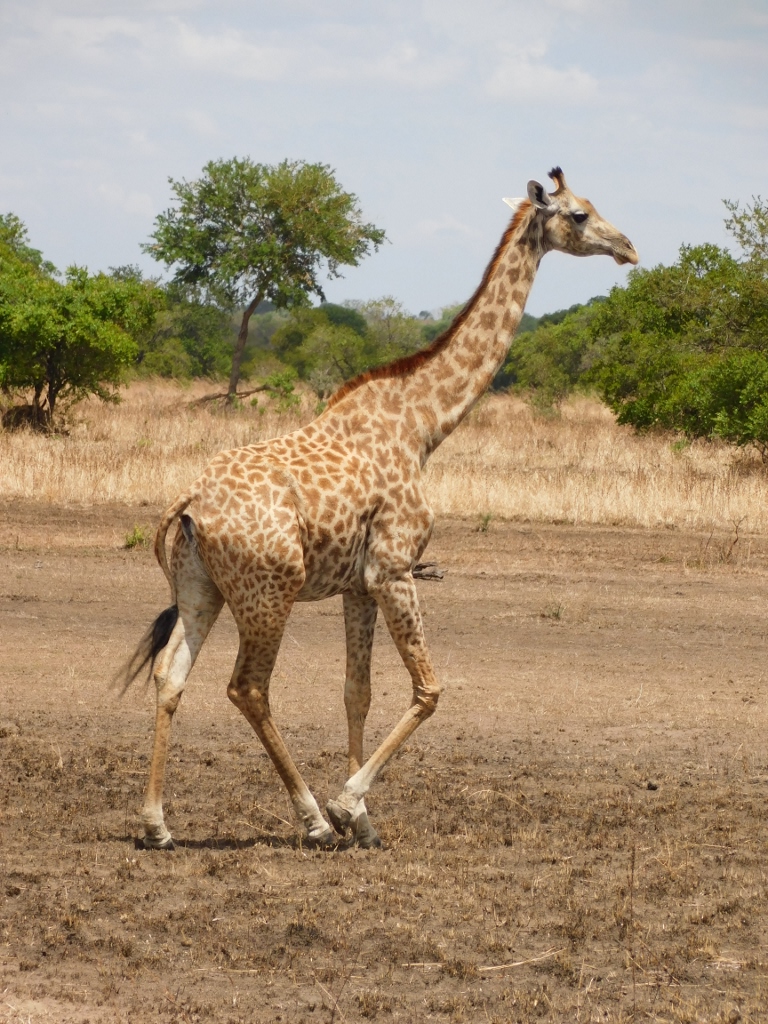 Giraffes in the shade
Giraffes in the shade
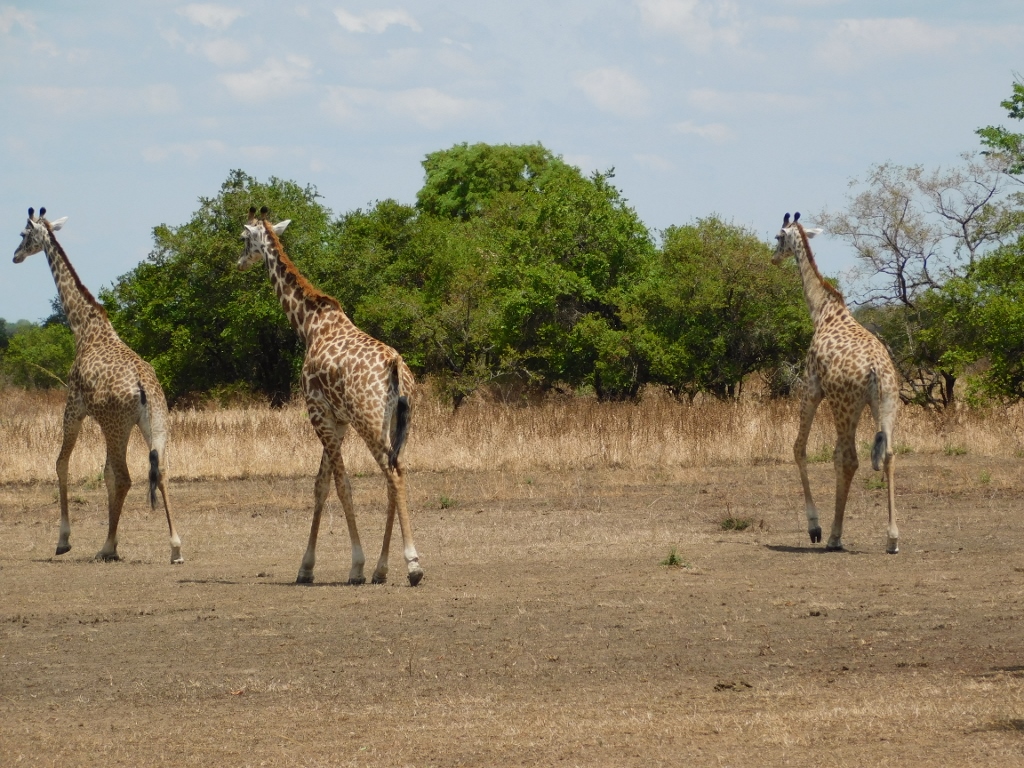 Giraffes in the shade
Giraffes in the shade
While we were standing in one place, I saw a quill of a porcupine on the ground. I don’t know where it came from, but there you are, I spotted it and I was glad.
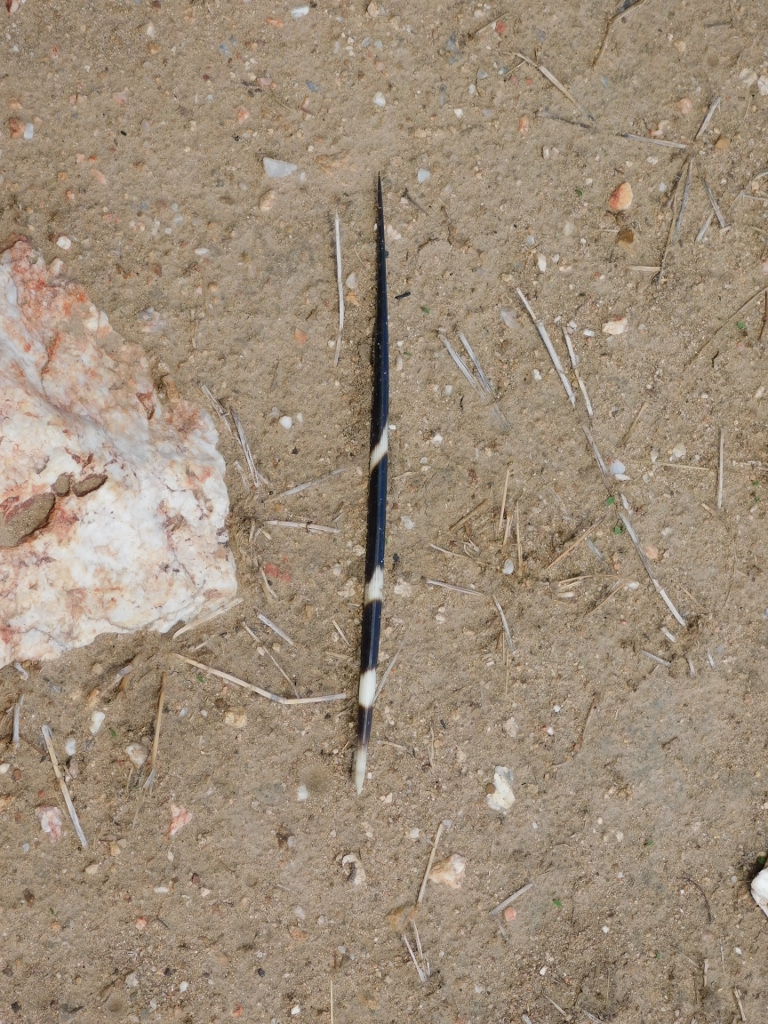 Quill of a porcupine
Quill of a porcupine
And then we started again with our “quest” for a leopard.
 Mikumi NP
Mikumi NP
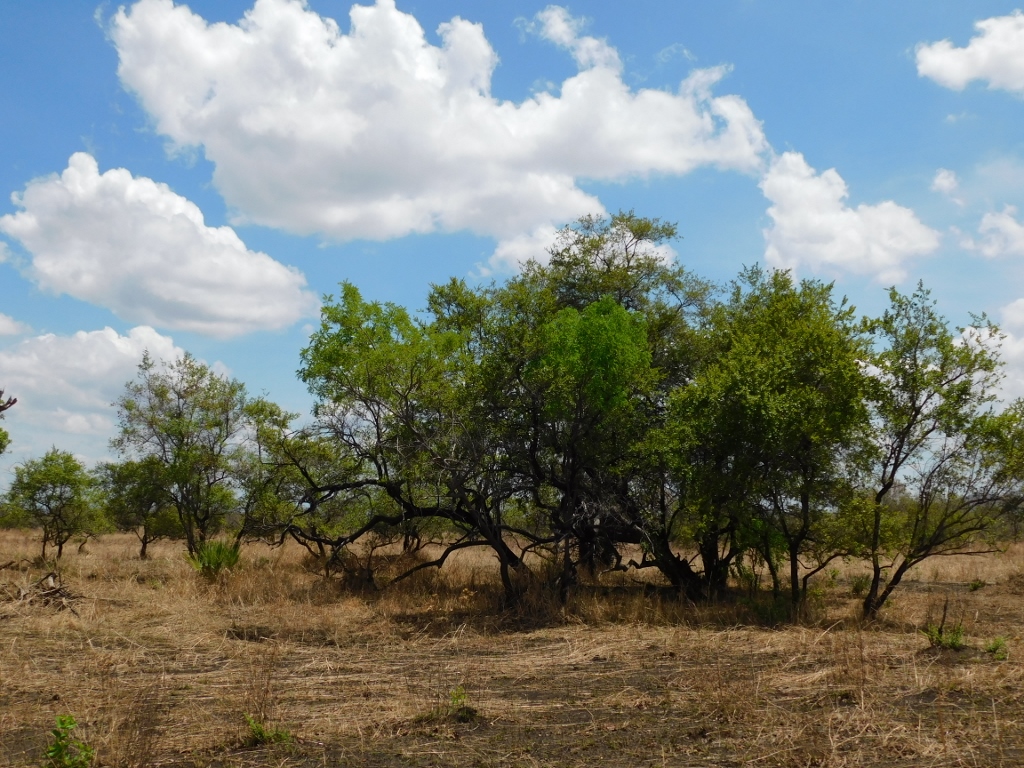 Mikumi NP
Mikumi NP
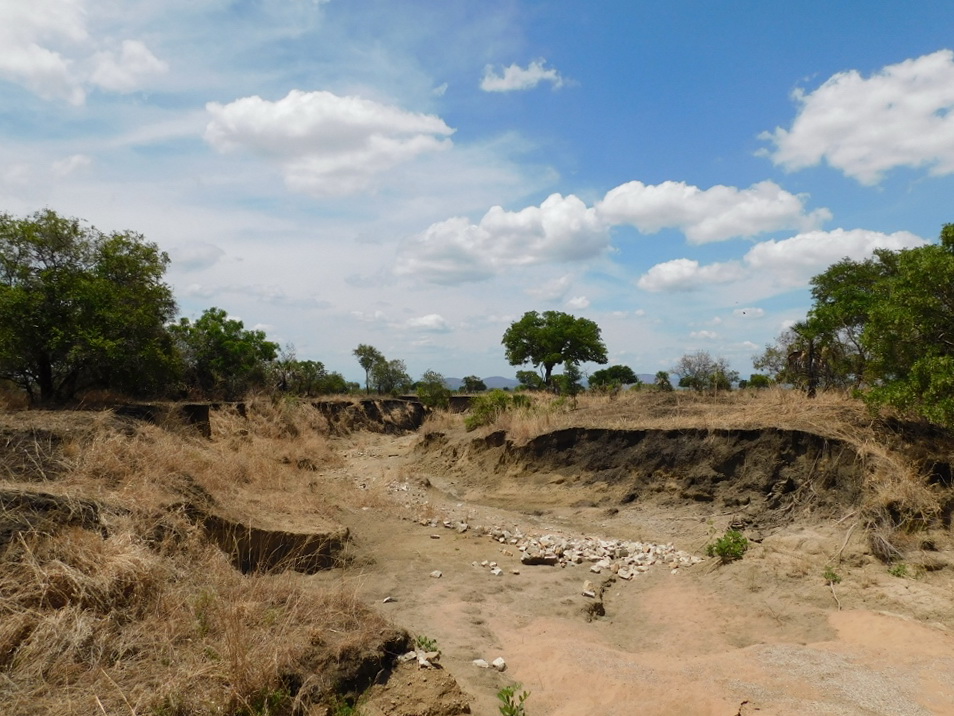 Mikumi NP
Mikumi NP
I was more or less sure that we wouldn’t find a leopard, but at least I was glad that we didn’t disturb the animals anymore. Here one should admire these animals from a decent distance from which they do not feel threatened. In addition, I think the visitors ought to be filled with a sense of gratitude to God and the Universe for having the privilege of coming here and to feel humbled by such magnificence. And to begin with, they should acquire elementary knowledge at least through TV and, for example, know that tigers/jaguars/cougars do not live on the African continent and that wildebeests are not “wild cows.” Yes, yes... I heard all sorts of things during this safari.
But, after an unsuccessful search for a leopard, we also went to see a very special baobab. We have seen baobabs in many places, they are not rare here, but the one we came to now was a little different from most.
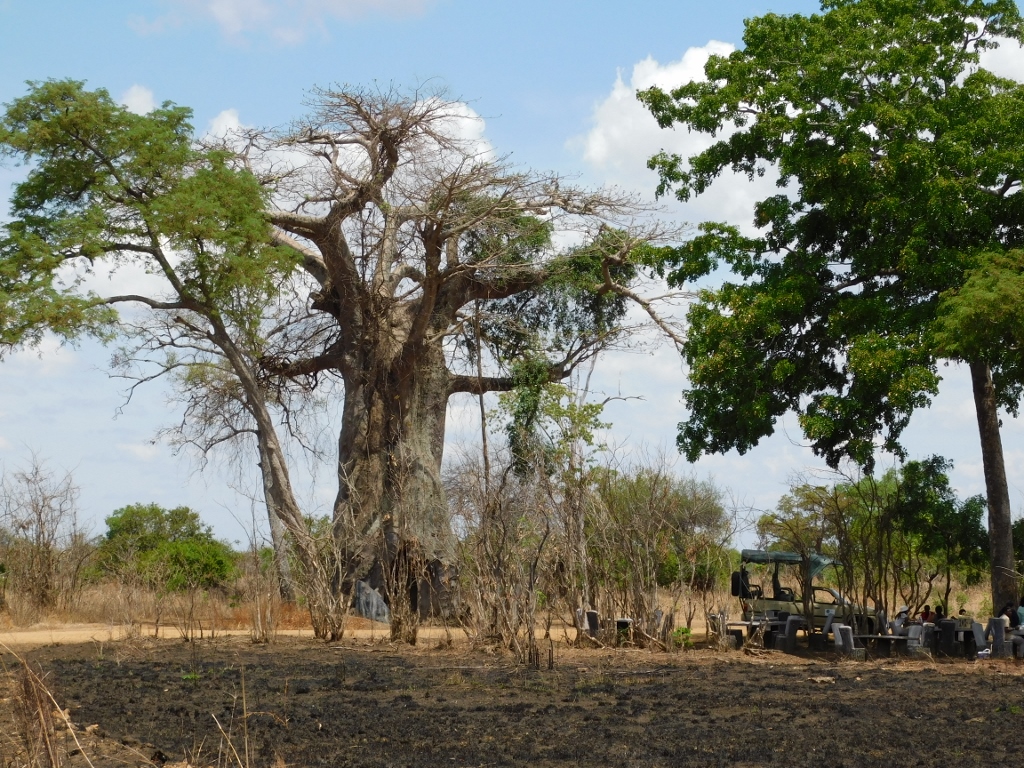 Baobab in the Mikumi NP
Baobab in the Mikumi NP
I have written extensively about baobabs in my travelogue from Madagascar, because six of the eight species of baobabs are endemic to Madagascar, so now I will not deal much with this type of tree. One of the species, the seventh of the eight, grows naturally in Australia, while the eighth, Adansonia digitata, grows on the African continent, as well as in parts of Asia (Yemen and Oman). Therefore, this baobab that we visited belongs to that species, Adansonia digitata, and near it there is also a clearing with tables and a toilet where park visitors can take a break.
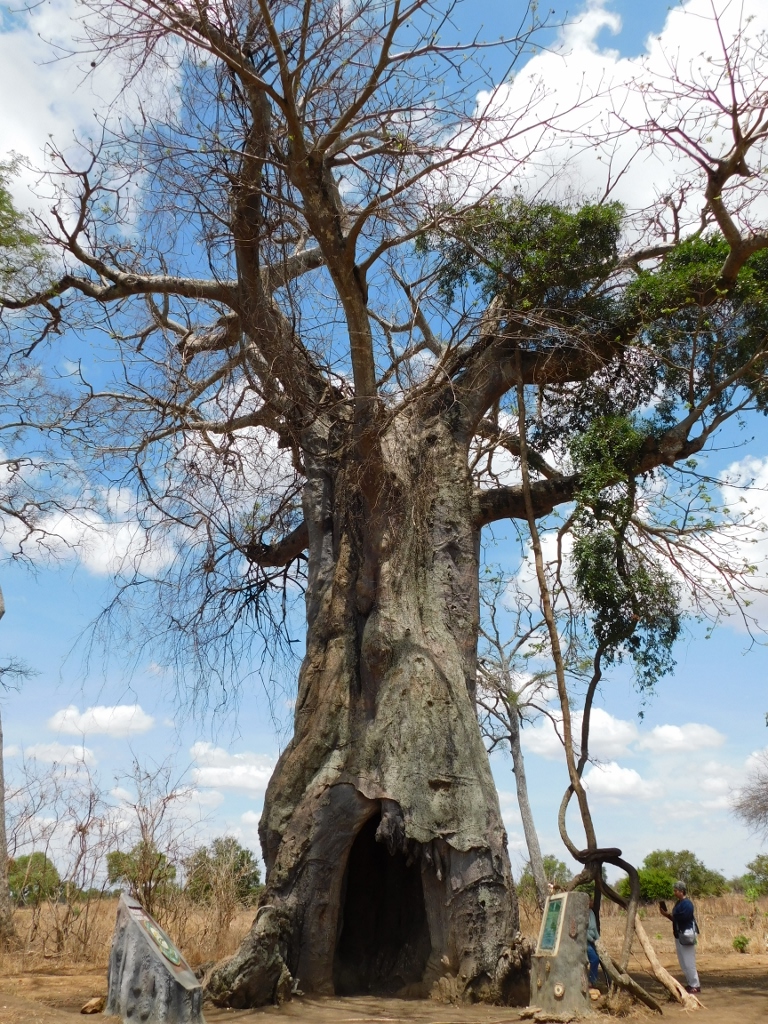 Baobab in the Mikumi NP
Baobab in the Mikumi NP
This baobab has such a large cavity in the middle that an adult can easily enter (note the woman on the right in the photo above) and this space was used in the past by poachers to hide their equipment, as well as to hide themselves, since you can see the “ladder” for climbing up in side.
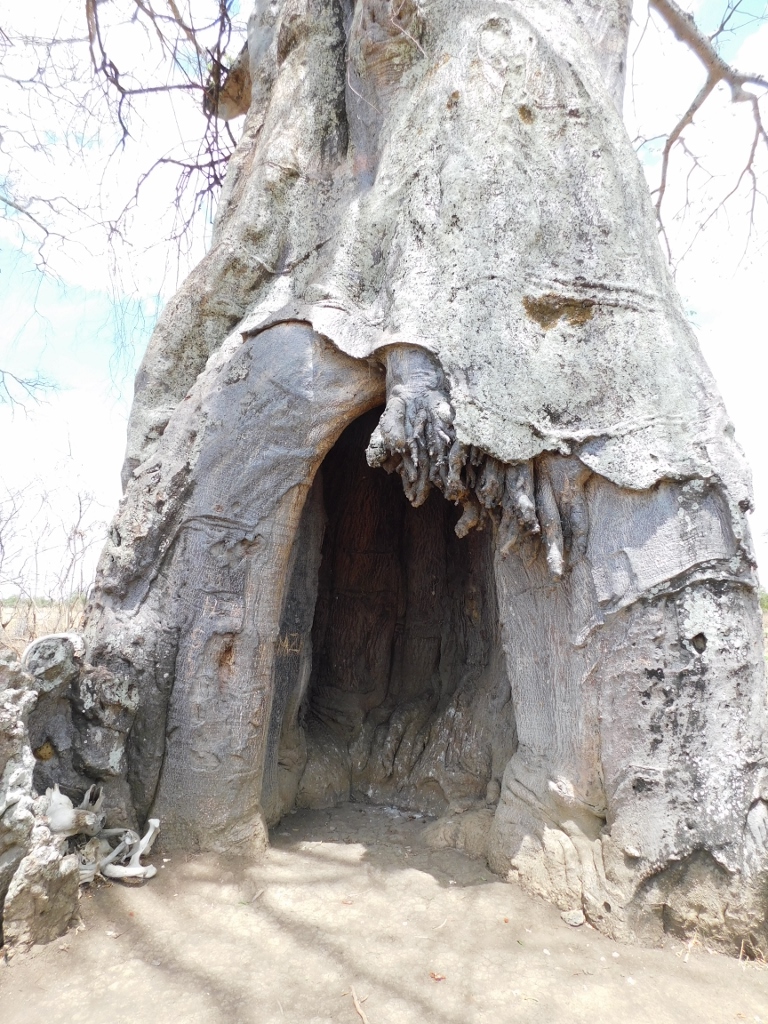 Baobab in the Mikumi NP
Baobab in the Mikumi NP
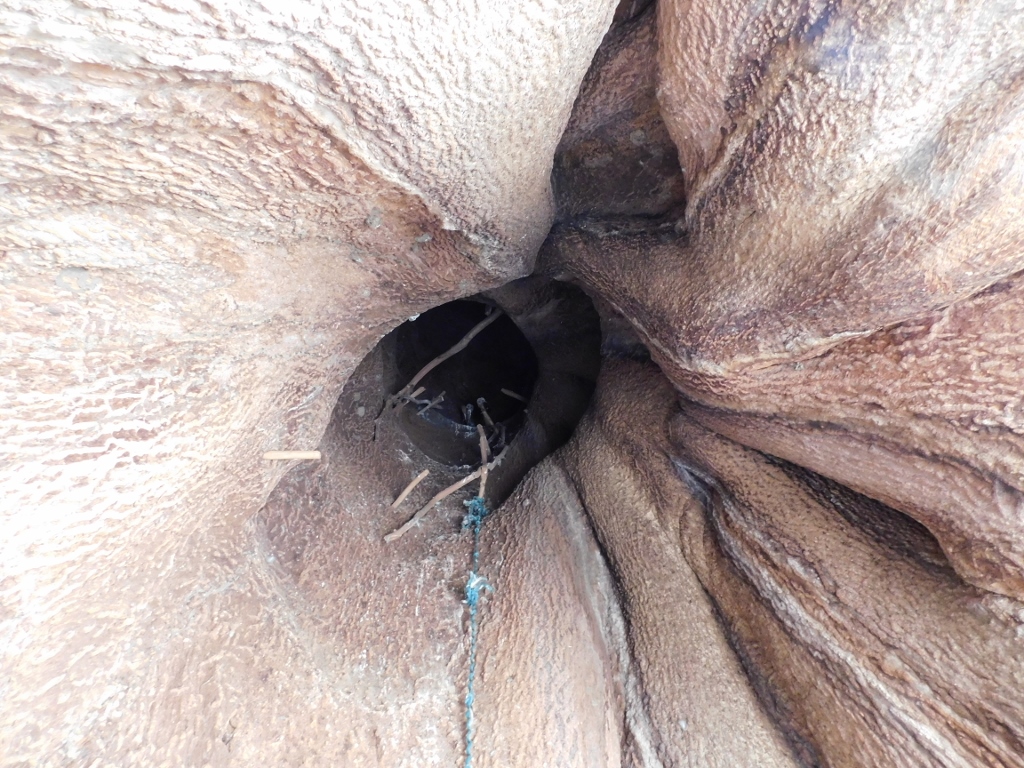 Baobab in the Mikumi NP
Baobab in the Mikumi NP
But, regardless of this immoral type of use, the baobab is an extremely useful tree – its bark is used as natural medicine, the fruit can be used to make juice and jam (I tried it in Madagascar, but I was not impressed), the bark can be used to make ropes, clothes, local hats and baskets, and these trees are also important for the local fauna. Baboons adore its fruits, birds nest in the canopy and fruit bats roost during the day.
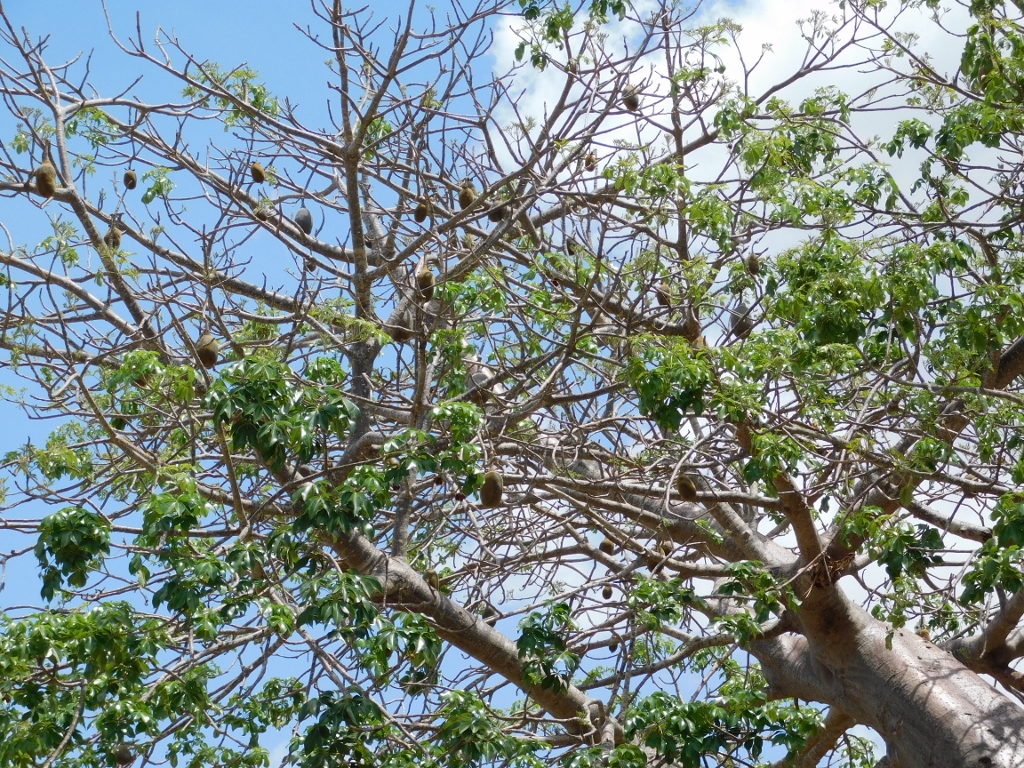 Baobab in the Mikumi NP
Baobab in the Mikumi NP
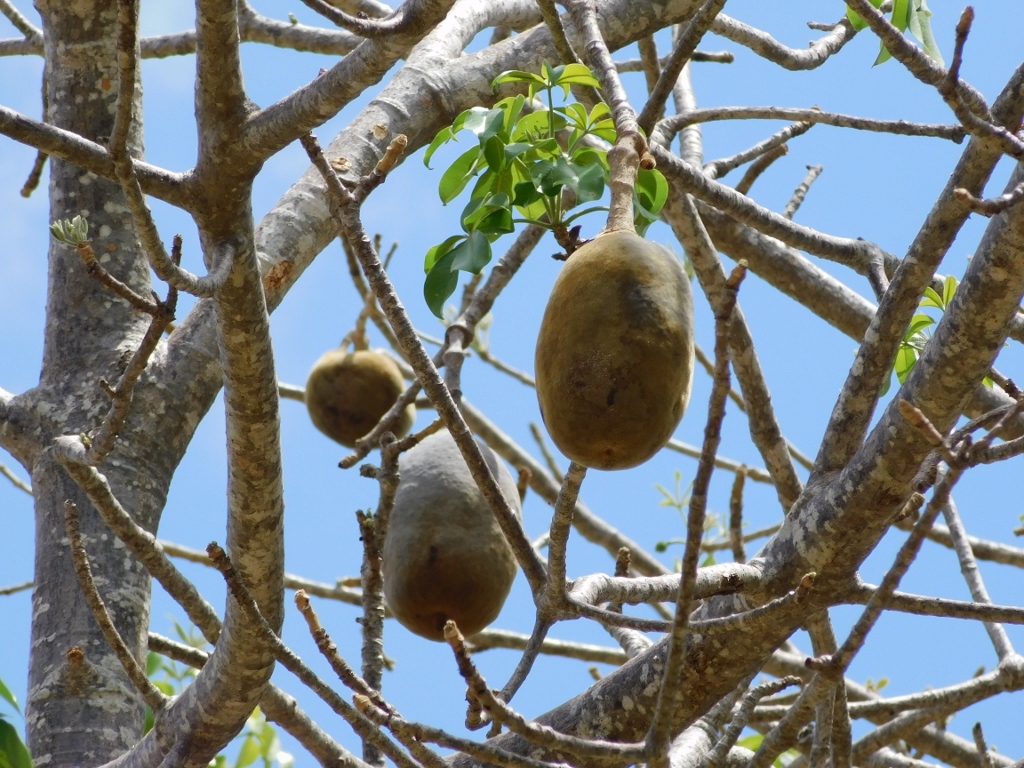 Baobab fruits
Baobab fruits
After this break, we continued driving around the national park. I still enjoyed it intensely, even when there were no animals in sight, because all of this reminded me of the many documentaries about the life in the savannah that I have watched throughout my life, and now I was there, on the spot, too.
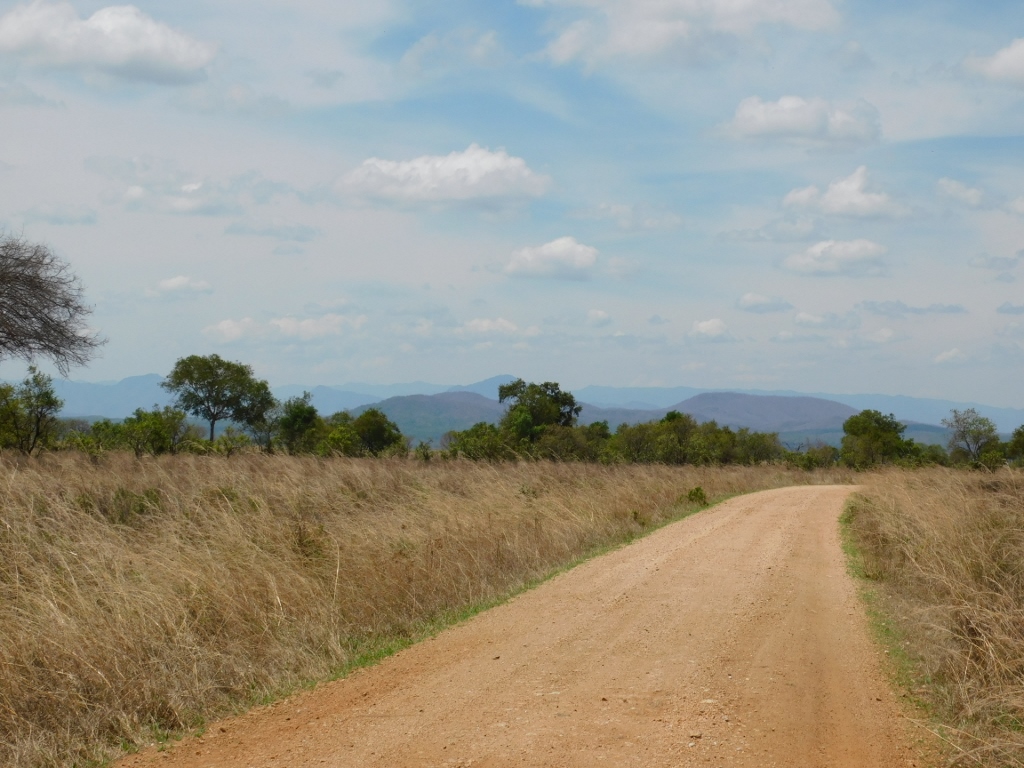 Mikumi NP
Mikumi NP
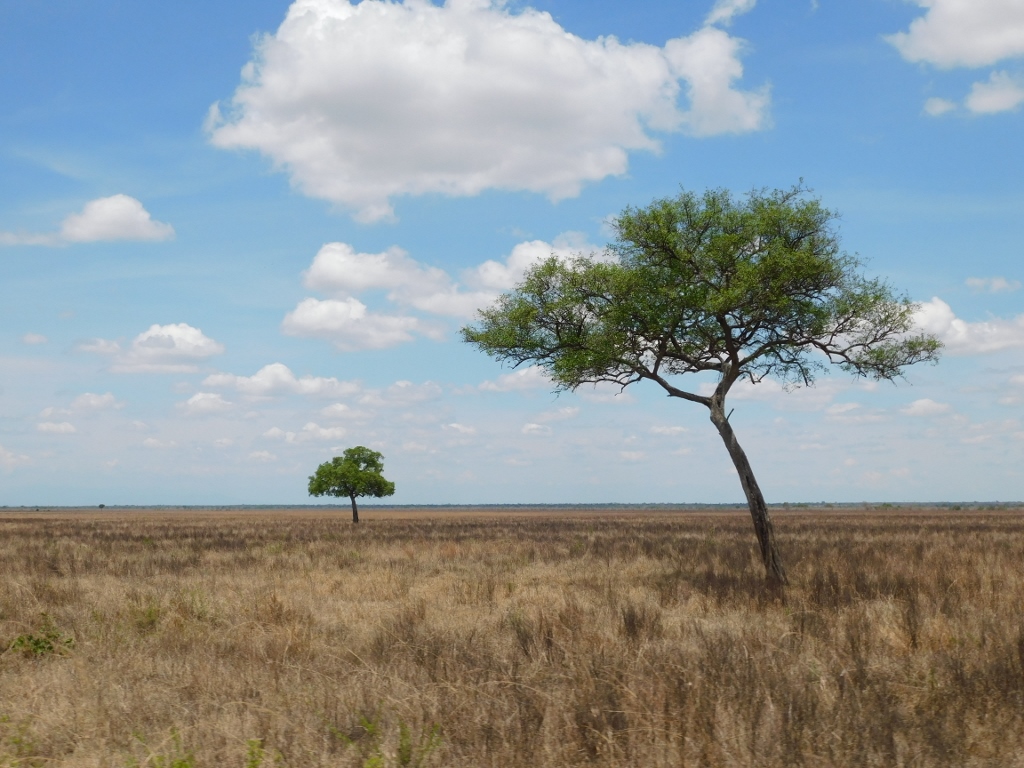 Mikumi NP
Mikumi NP
By the way, when I asked the driver/guide if cheetahs lived in the national park, he told me that they didn’t because, as he explained, this type of cat needs much more flat space to hunt. Obviously the plain seen in the previous photo is not enough.
Soon we came across a couple of giraffes again. One was walking alone in the open air and the other was a little further away in the company of her cub.
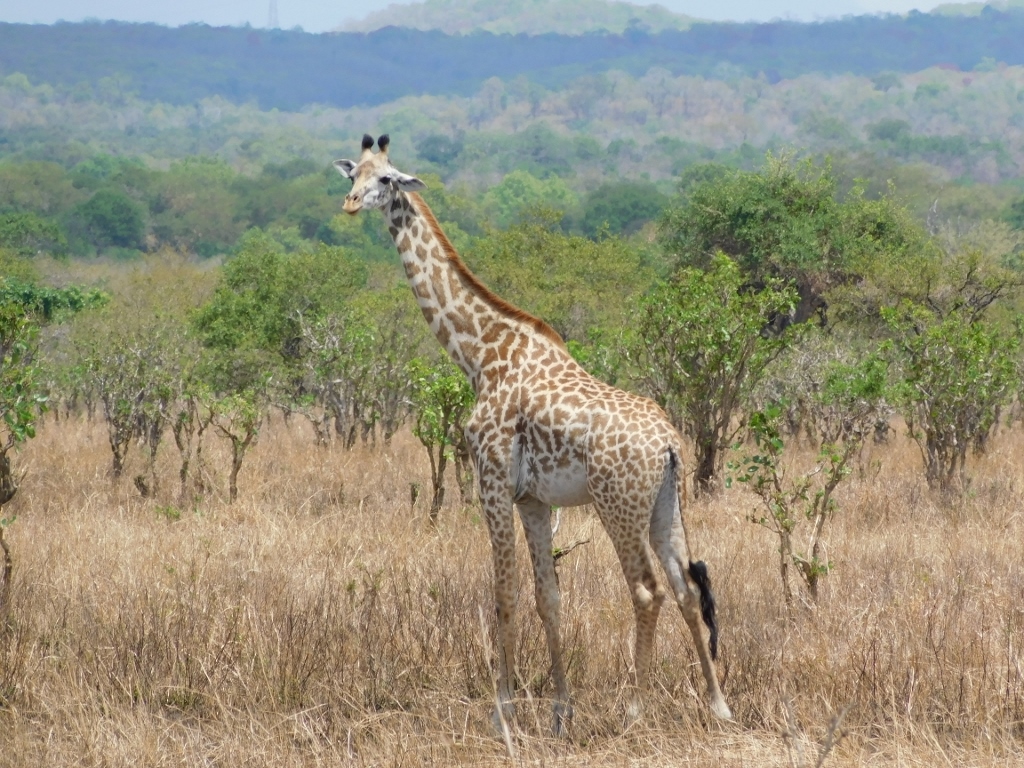 Giraffe in the Mikumi NP
Giraffe in the Mikumi NP
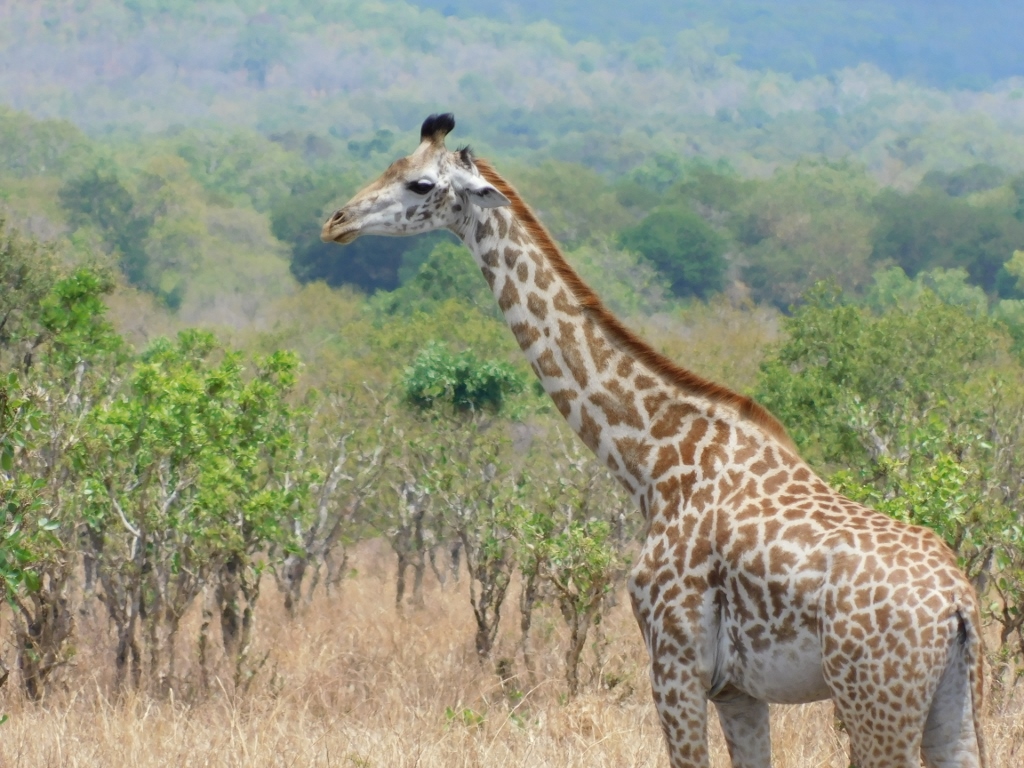 Giraffe in the Mikumi NP
Giraffe in the Mikumi NP
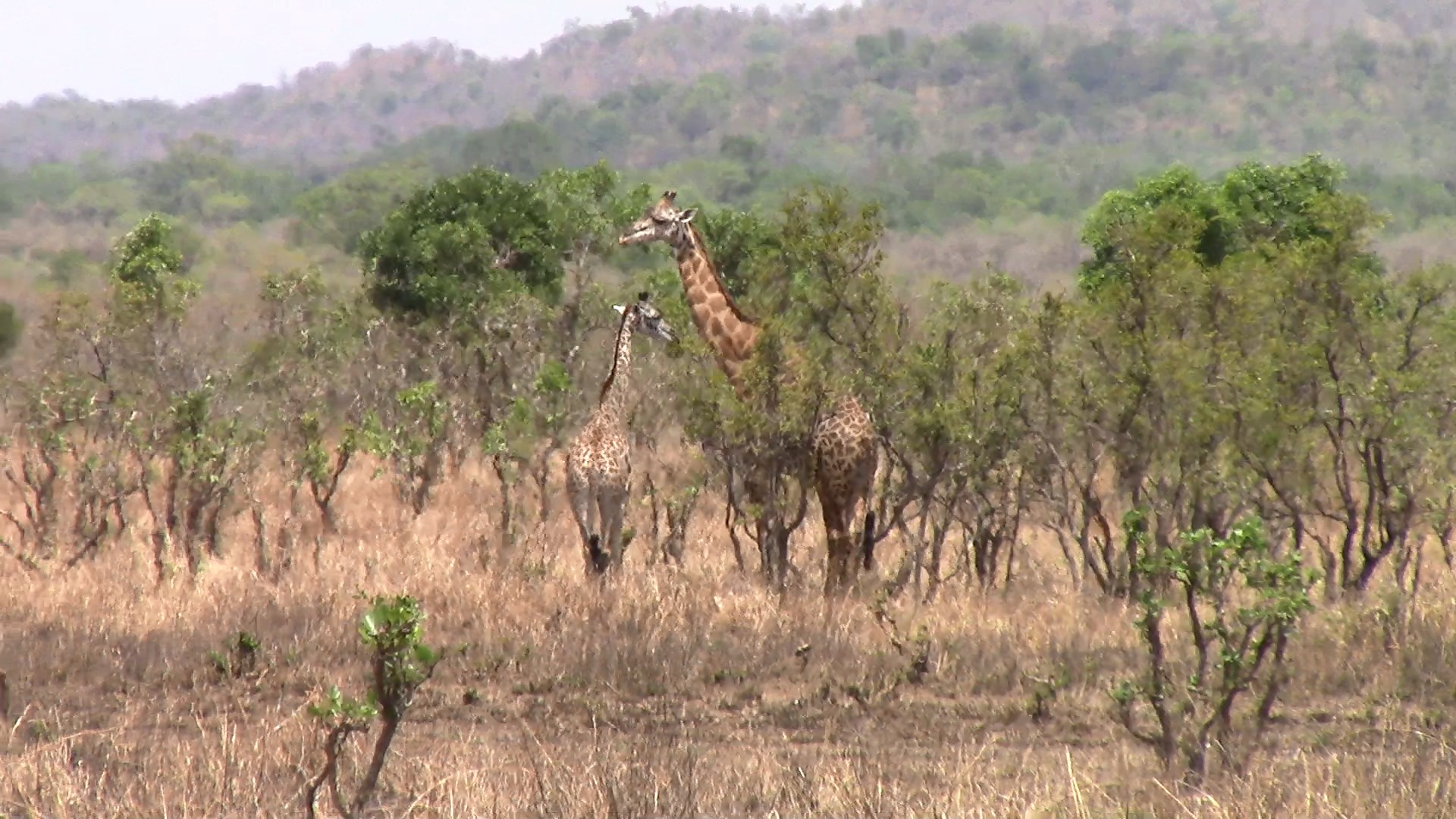 Giraffe and her cub in the Mikumi NP
Giraffe and her cub in the Mikumi NP
Soon we saw a third one standing in the shade, though not alone. She was in the company of a couple of monkeys, although they were clearly not socialising – moreover, they turned their backs on each other.
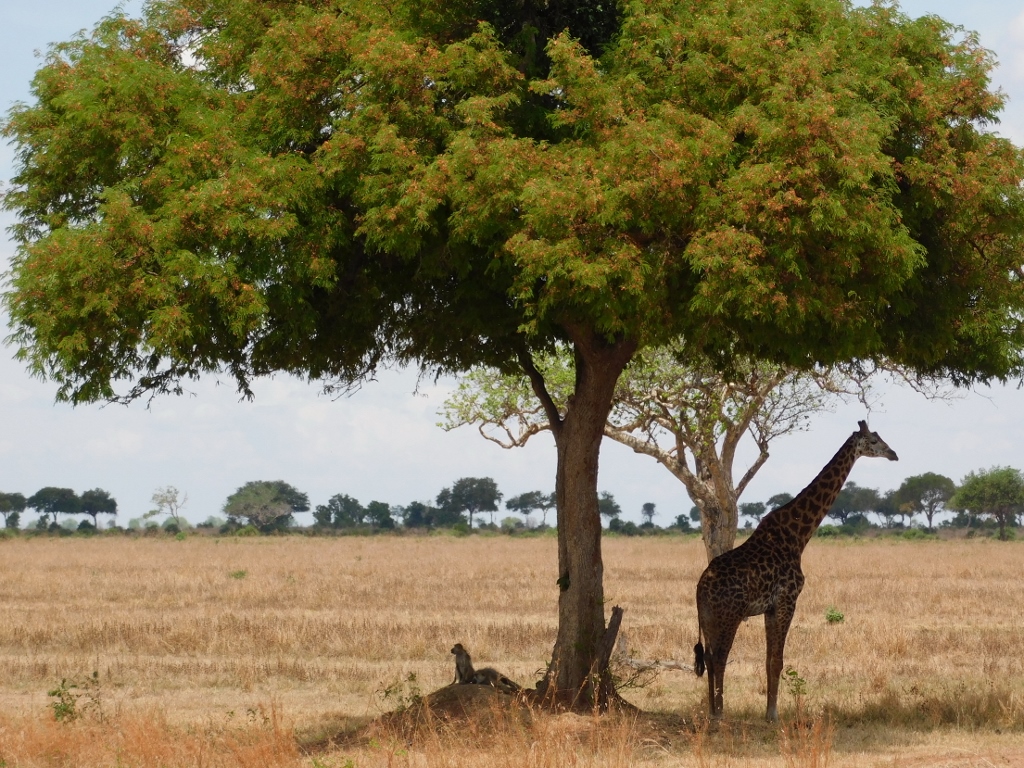 Giraffe and monkeys in the Mikumi NP
Giraffe and monkeys in the Mikumi NP
Not far from here we also saw a small baboon that was enjoying some fruits.
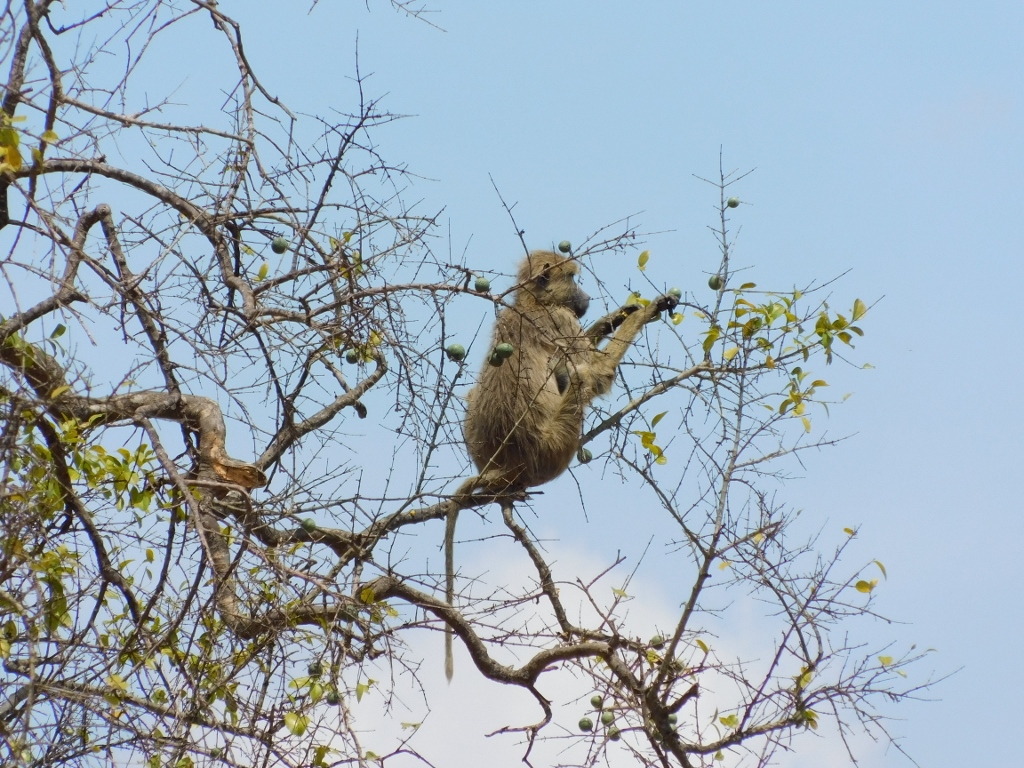 Baboon in a treetop
Baboon in a treetop
Since I’m mentioning treetops, let me say that we soon reached a section of the national park where the lunch break was planned and parts of that “urban” segment can be seen in the photo below, but the treetop was much more interesting and that was exactly what I actually wanted to take a photo of.
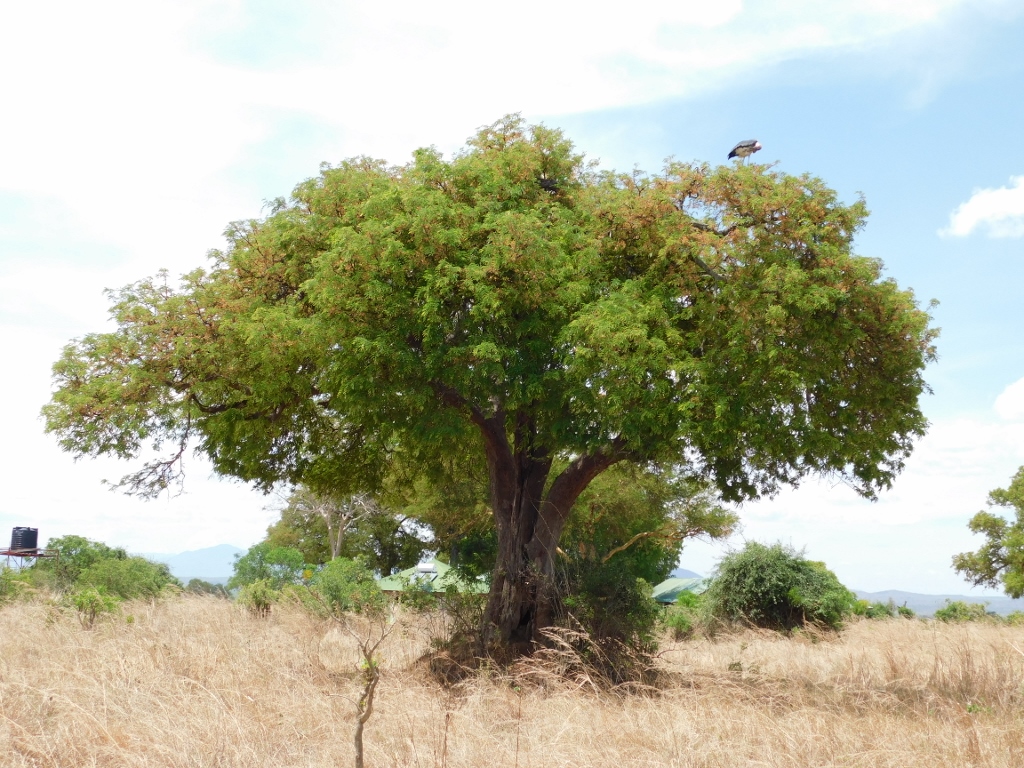 Mikumi NP
Mikumi NP
If you look a little closer, on the top of the canopy, on the right side, you can see a big bird. I also managed to zoom up on it and it was a marabou stork (Leptoptilos crumeniferus).
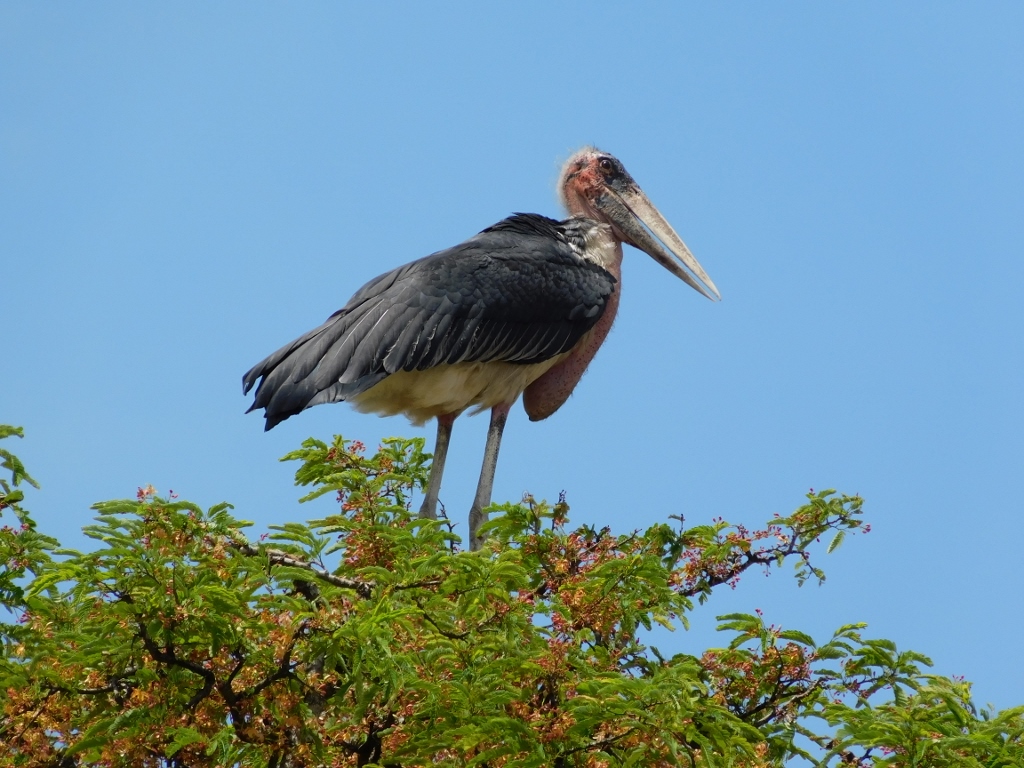 Marabou in the Mikumi NP
Marabou in the Mikumi NP
Then we came to the “urbanised” part of the national park where there are several bungalows where visitors can sleep, since multi-day tours can also be organised in the national park. There is also a bigger building with one large room with tables, as it is practically a dining room for the visitors.
But, some interesting animals could be seen here as well. For example, a male vervet monkey (Chlorocebus pygerythrus).
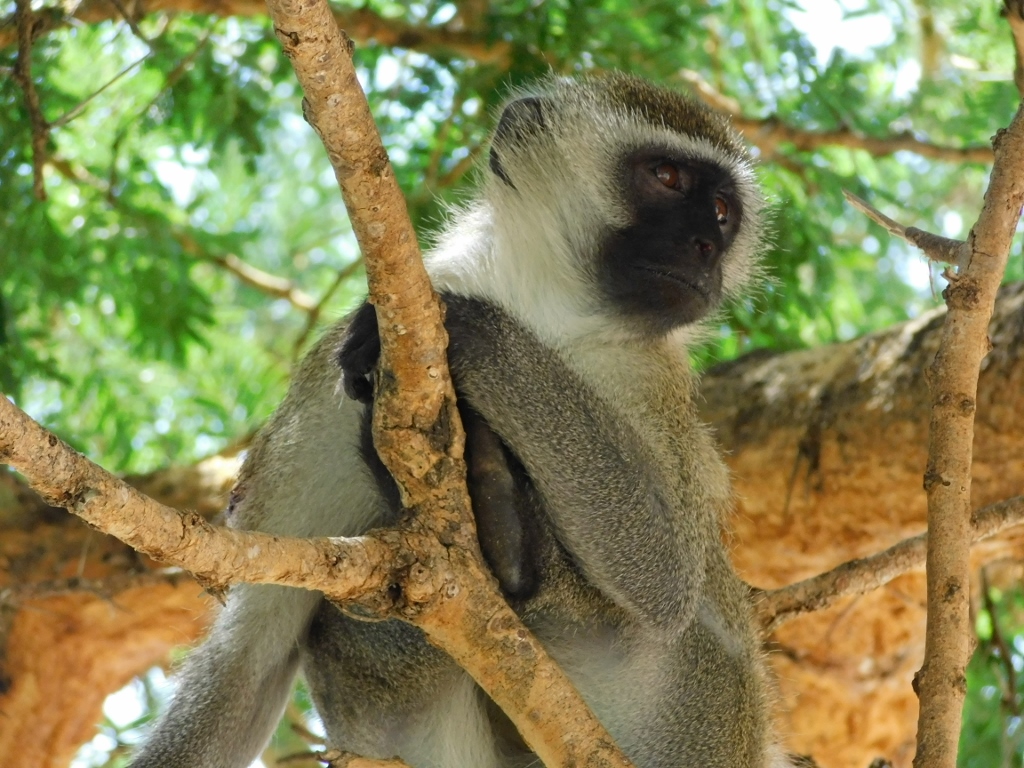 Male vervet
Male vervet
How do I know it’s a male? Well, look at his scrotum. It is clearly turquoise-blue.
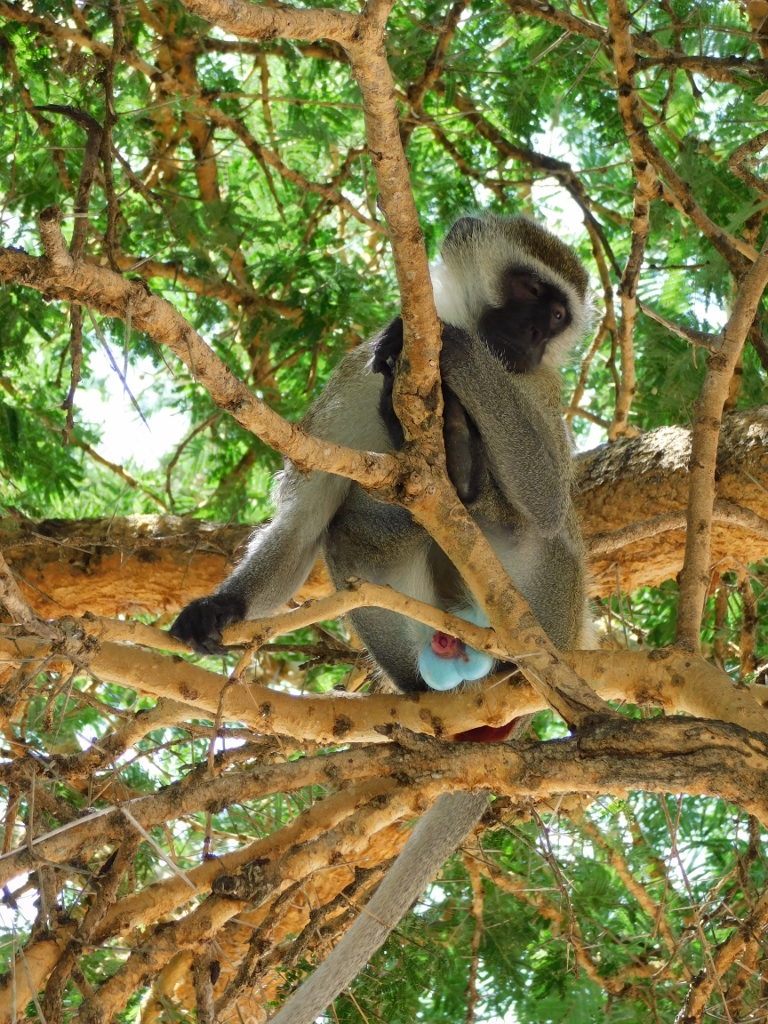 Male vervet
Male vervet
After lunch, I continued to look across the lawn around the bungalows and that’s how I spotted some lovely blue birds. These are blue-capped cordonbleus (Uraeginthus cyanocephalus).
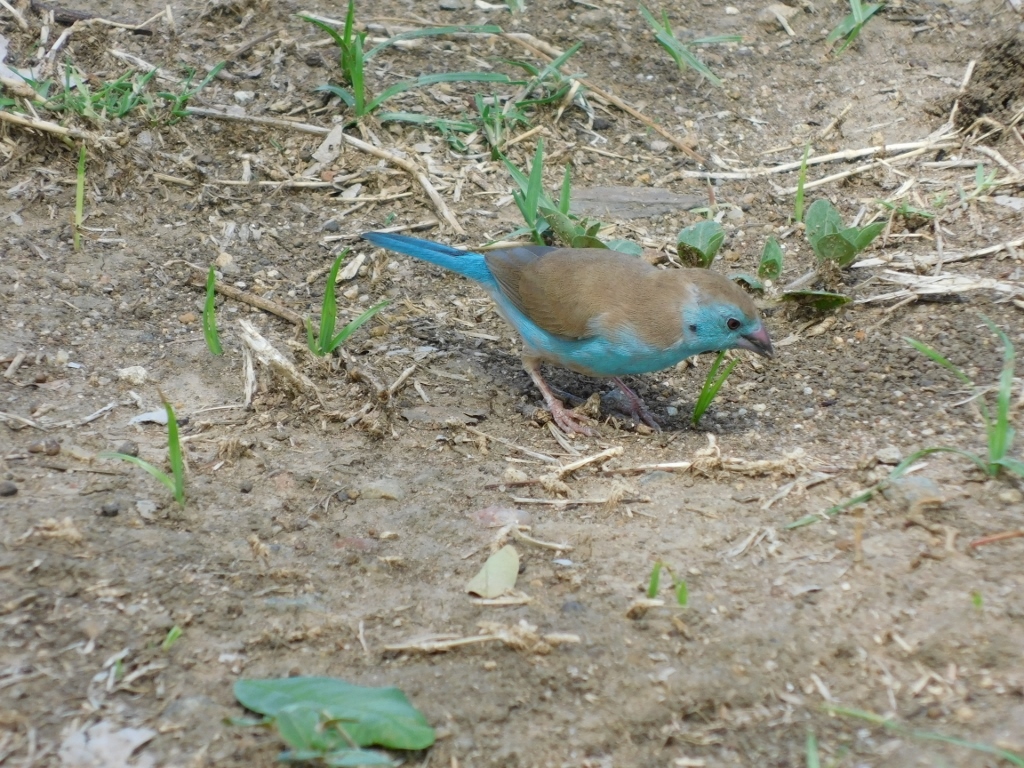 Blue-capped cordonbleu
Blue-capped cordonbleu
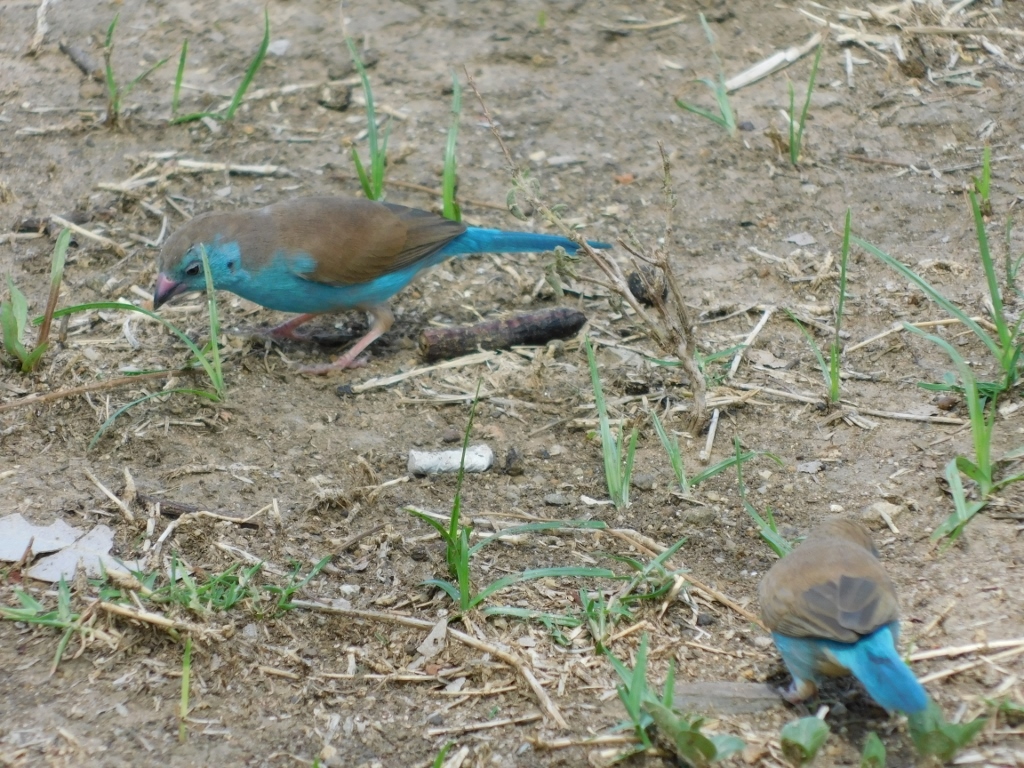 Blue-capped cordonbleu
Blue-capped cordonbleu
And then a common warthog also came along.
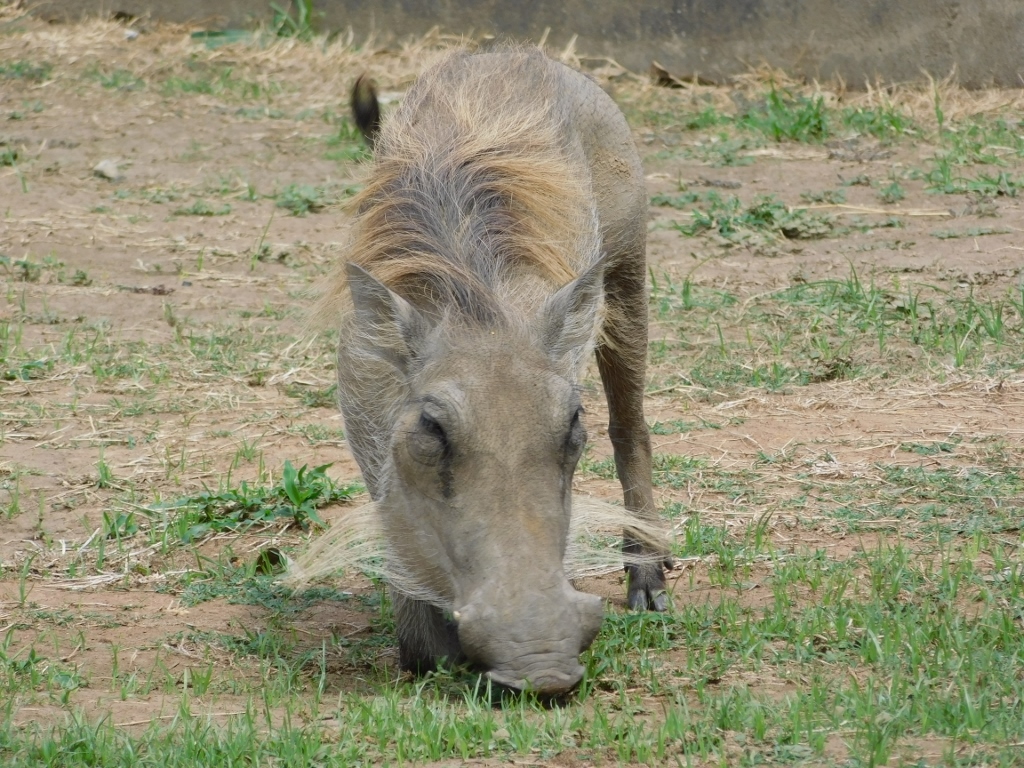 Common warthog
Common warthog
The common warthog is the only pig species that has adapted to grazing and the life in the savannah. However, since it has a short neck and relatively long legs, it does this very specifically – it kneels down on its front legs, which are reinforced at the joints in order to make this possible without suffering an injury. Very interesting indeed!
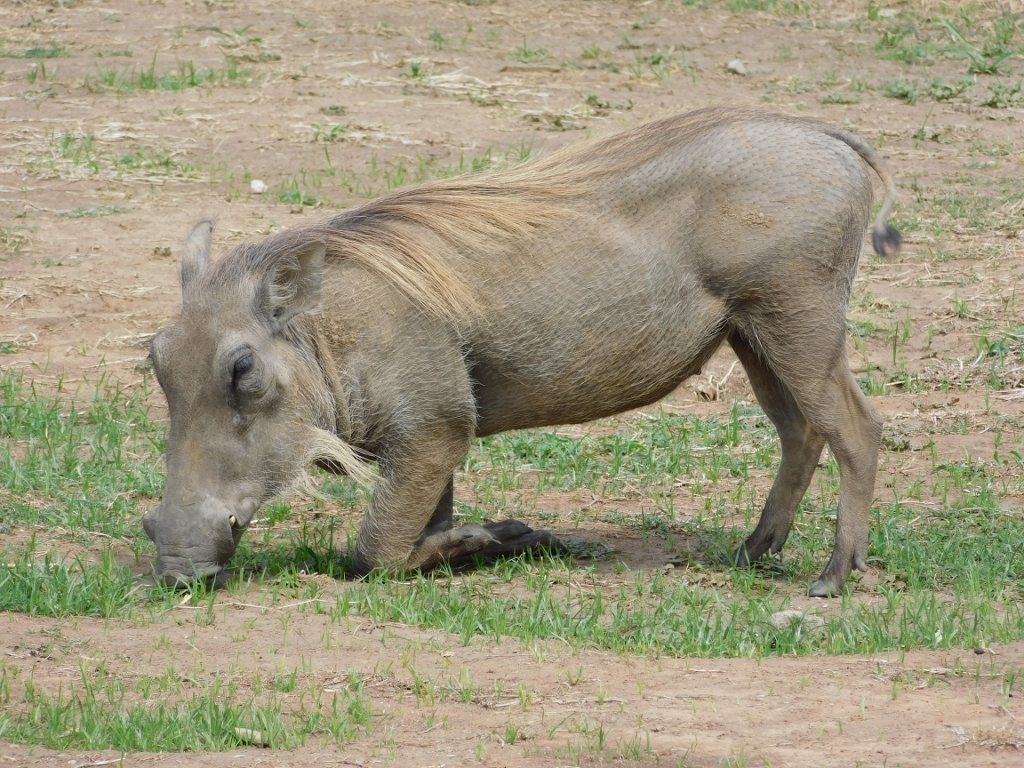 Common warthog
Common warthog
After this break for lunch and a short rest, we got back into the special 4x4 vehicle with tiered seats and continued with our tour of the Mikumi National Park. In a way, we started to see the same kinds of animals “all over again,” but it didn’t bother me in the least. Thus, we saw a herd of impalas under a lone tree that had a large and rich treetop providing a good shade in this way.
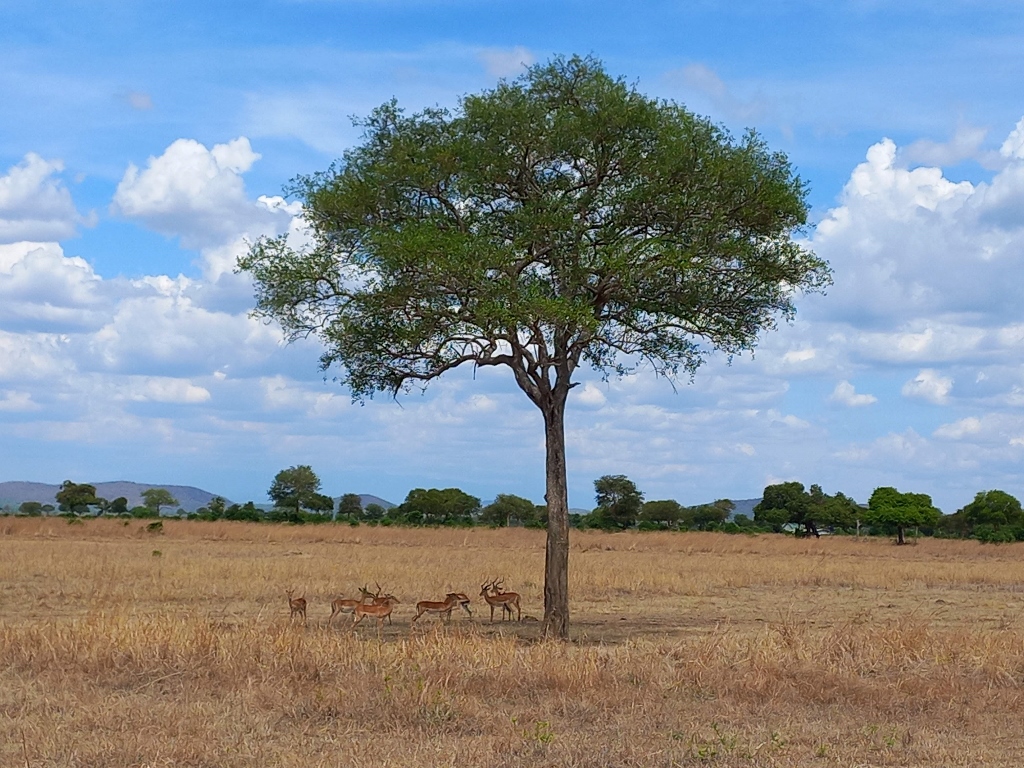 Impalas in the Mikumi NP
Impalas in the Mikumi NP
The vehicle stopped and I was able to zoom in. Apart from the impalas showing up in the following photos, it is interesting to see red-billed oxpeckers (Buphagus erythrorynchus). These birds feed on insects and as a rule they find them on large domestic and wild mammals in the form of ticks. The mammals tolerate them quite calmly because the birds help them with the pest control.
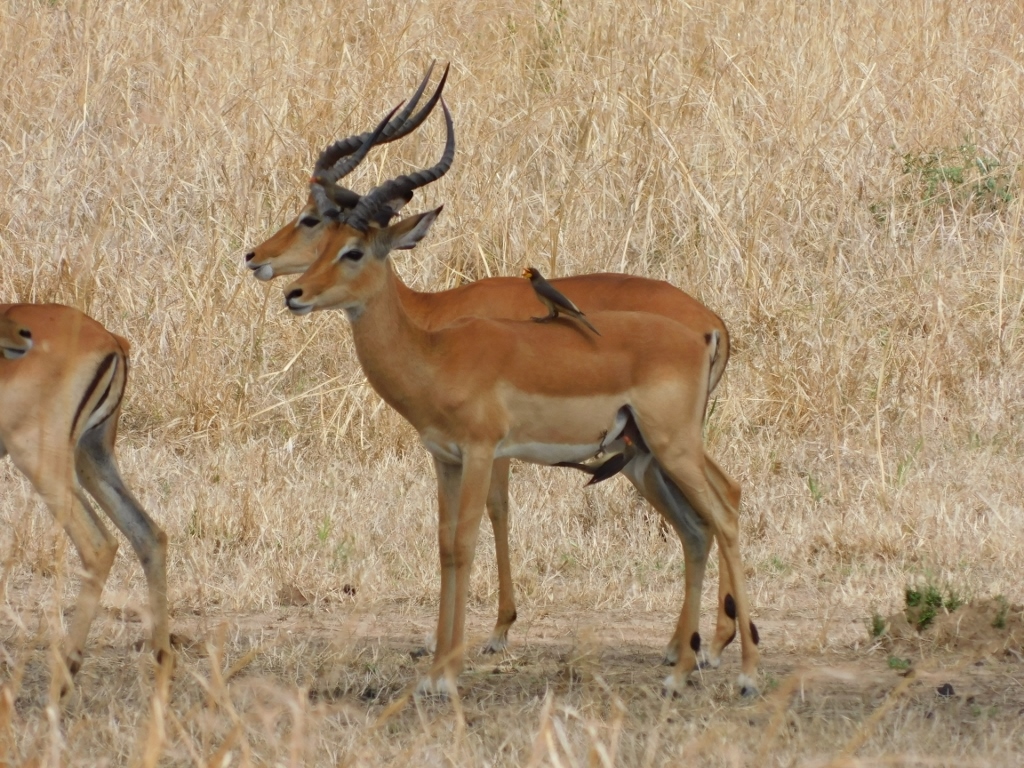 Impalas and red-billed oxpeckers
Impalas and red-billed oxpeckers
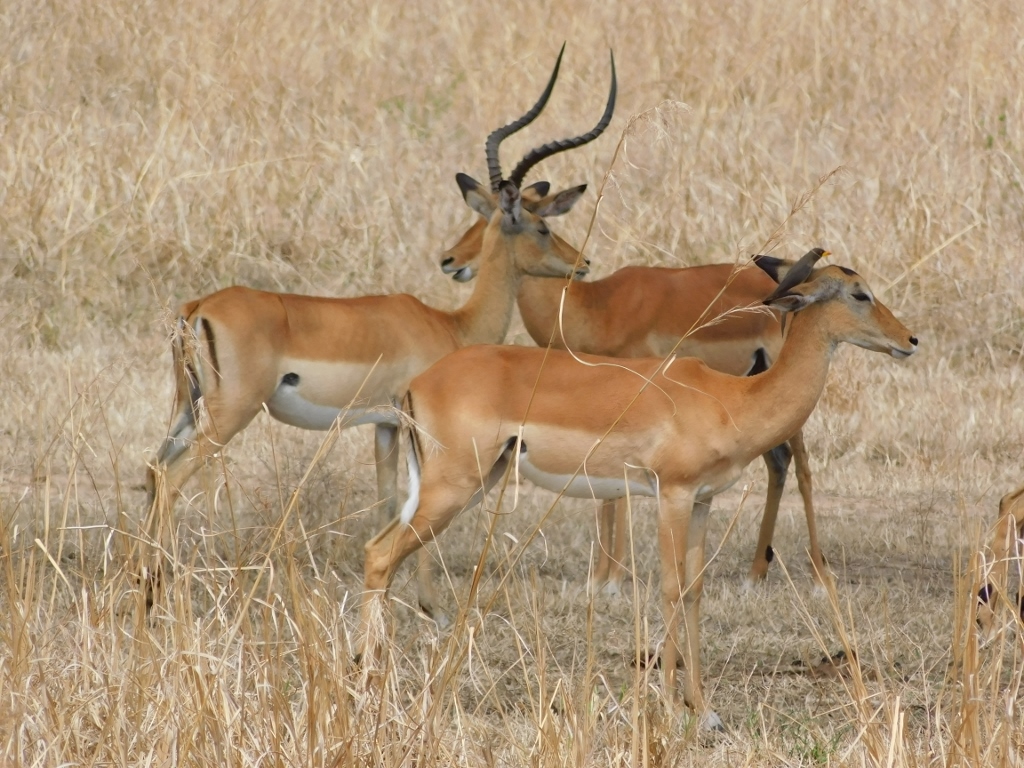 Impalas and red-billed oxpeckers
Impalas and red-billed oxpeckers
A little further we passed by another huge tree around which there was a clearing with wooden tables and probably a toilet. There are several spots like that within the park, because visitors need to take a break from time to time.
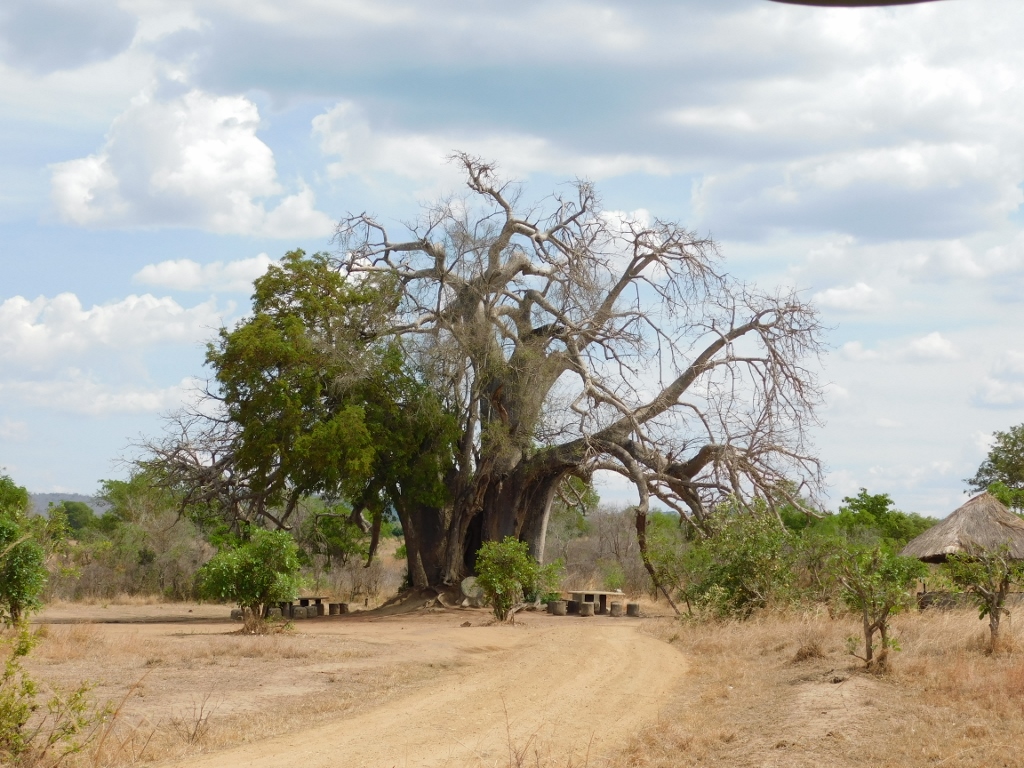 Mikumi NP
Mikumi NP
By the way, I often made videos during the drive, so here is a short compilation that ends when we came across a couple of common warthogs.
While a common warthog grazed calmly using its “knees,” another one looked at us in confusion.
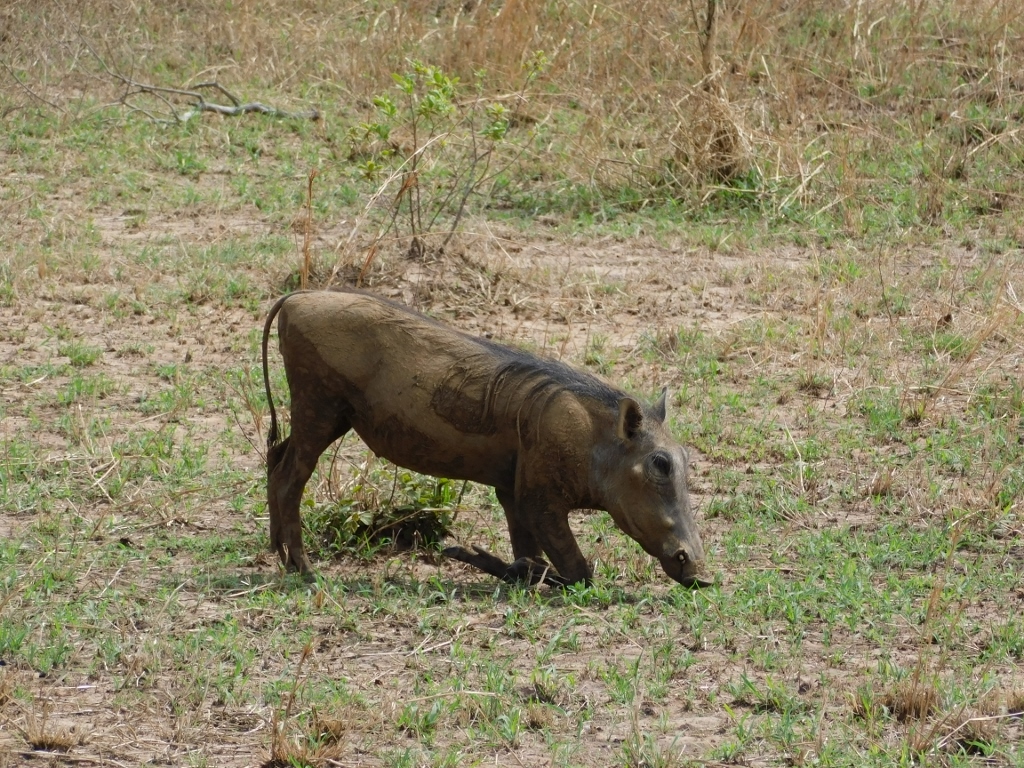 Common warthog
Common warthog
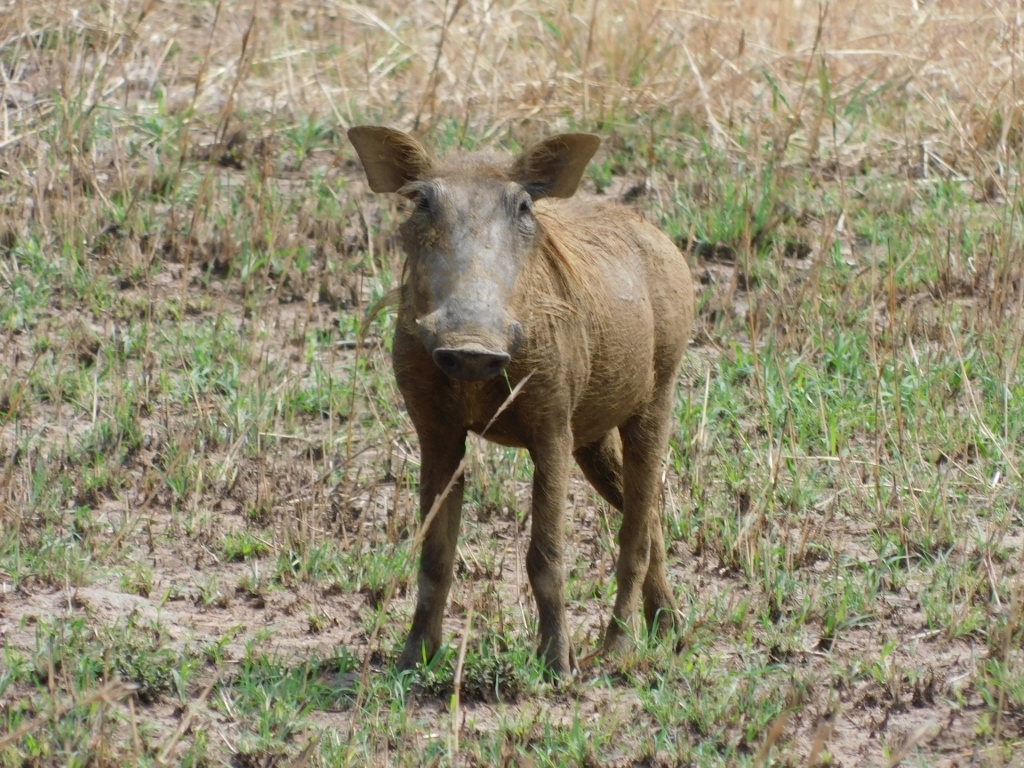 Common warthog
Common warthog
Savannahs are mainly grassy areas, but here and there they are dotted with trees – sometimes solitary, sometimes in groups.
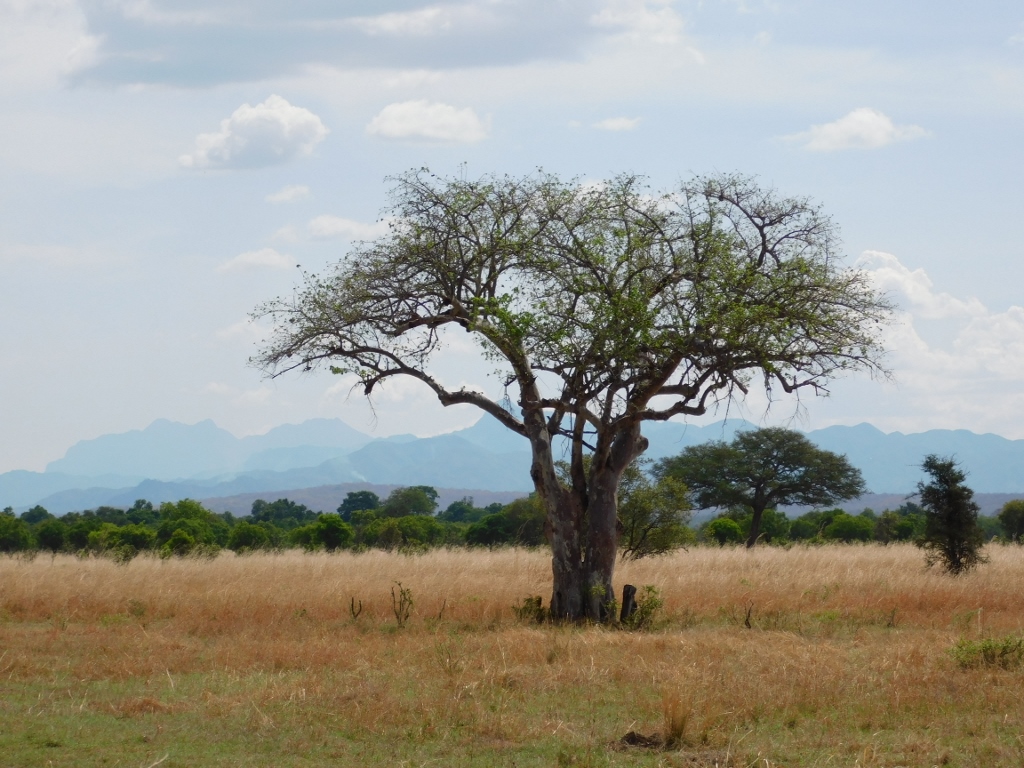 Mikumi NP
Mikumi NP
Although I was here during the so-called “short rainy season,” as can be concluded from the photos, the vegetation was not too lush, which made it easier to spot some animals. For example, a variety of marsh harrier that was walking through the grass.
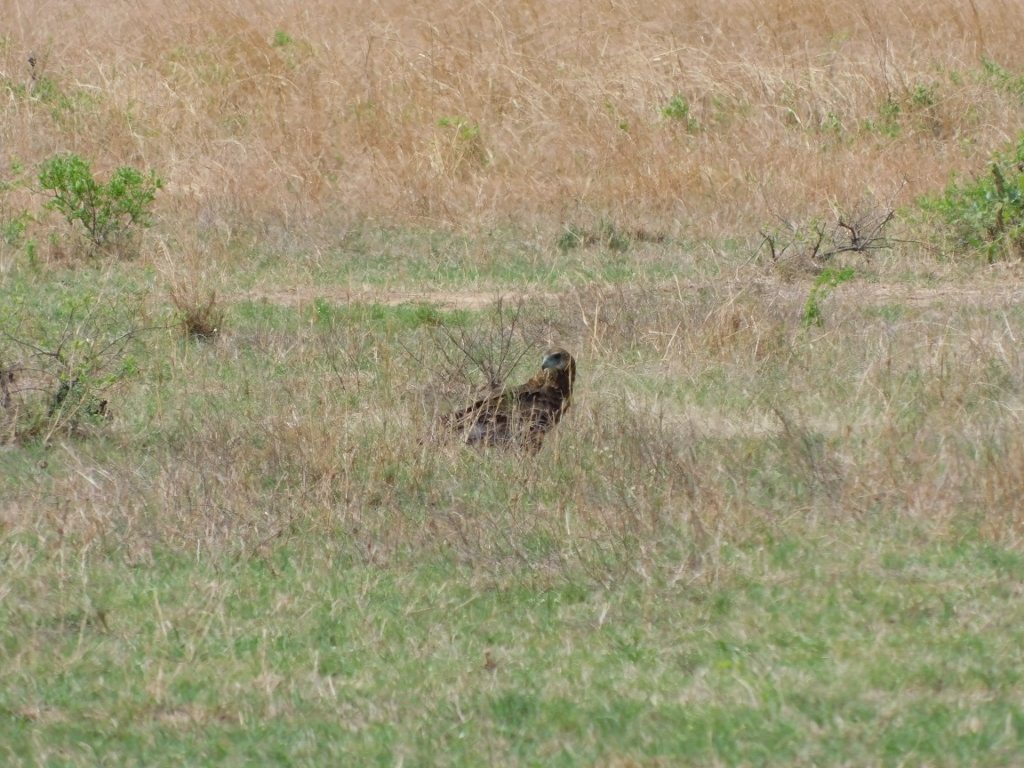 A marsh harrier
A marsh harrier
Zebras were much easier to spot, simply because they are bigger.
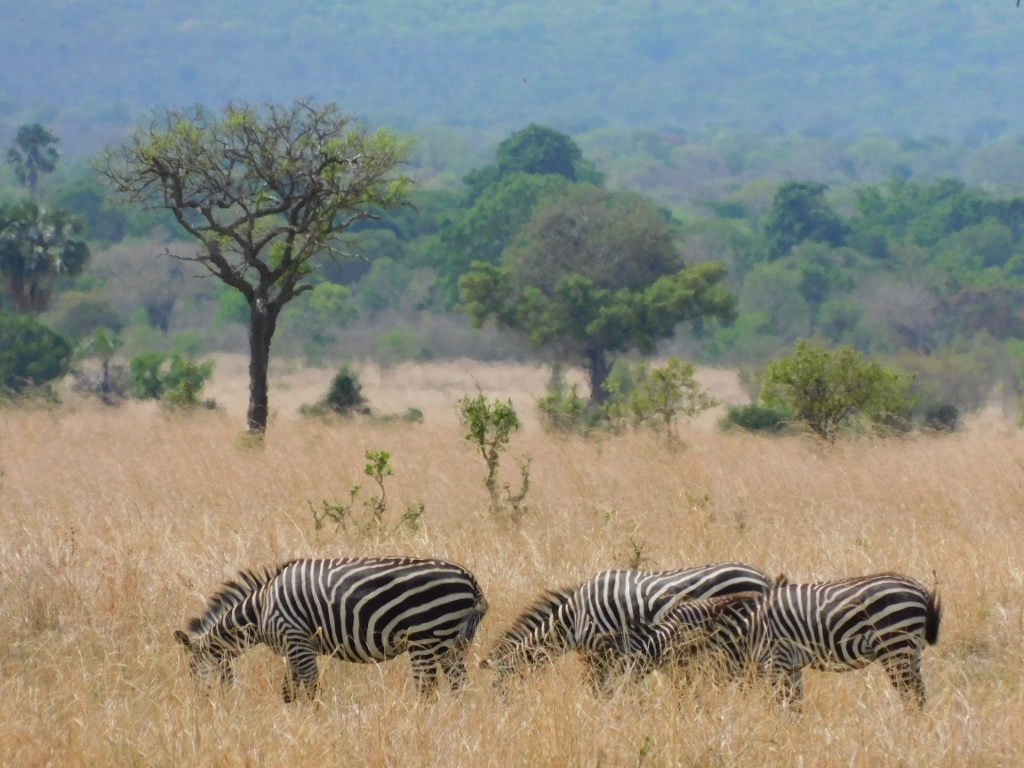 Zebras in the Mikumi NP
Zebras in the Mikumi NP
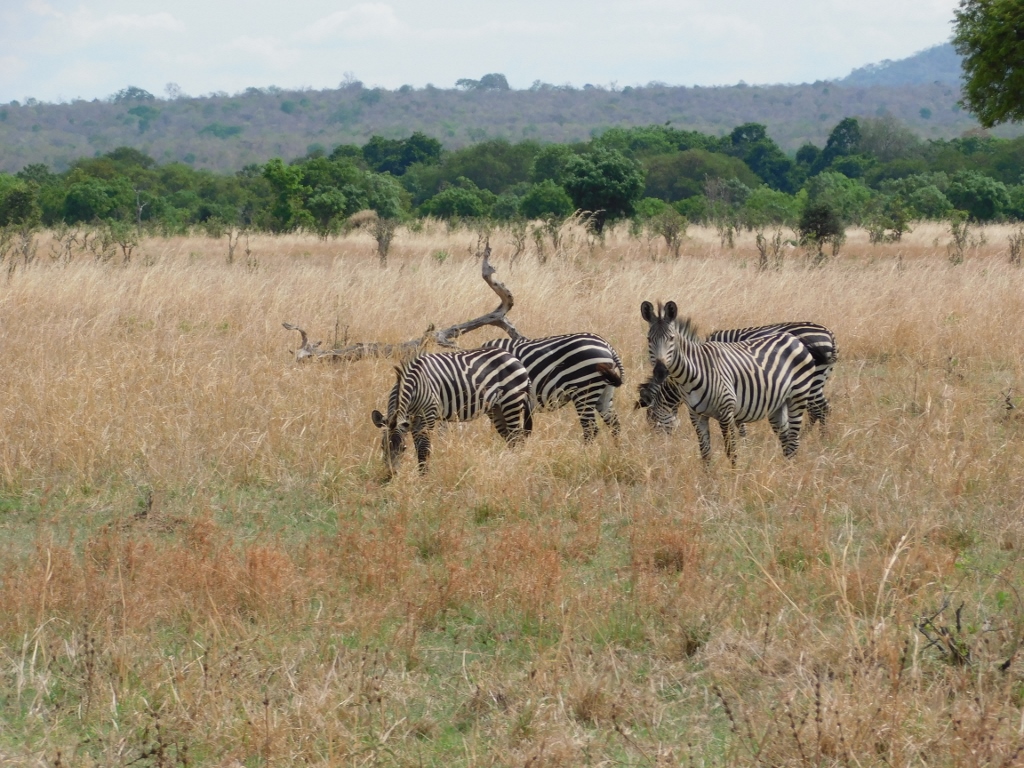 Zebras in the Mikumi NP
Zebras in the Mikumi NP
And then we finally saw some wildebeests. It was not a huge herd, as can often be seen in documentaries showing the famous migrations of these antelopes, but I was still very pleased.
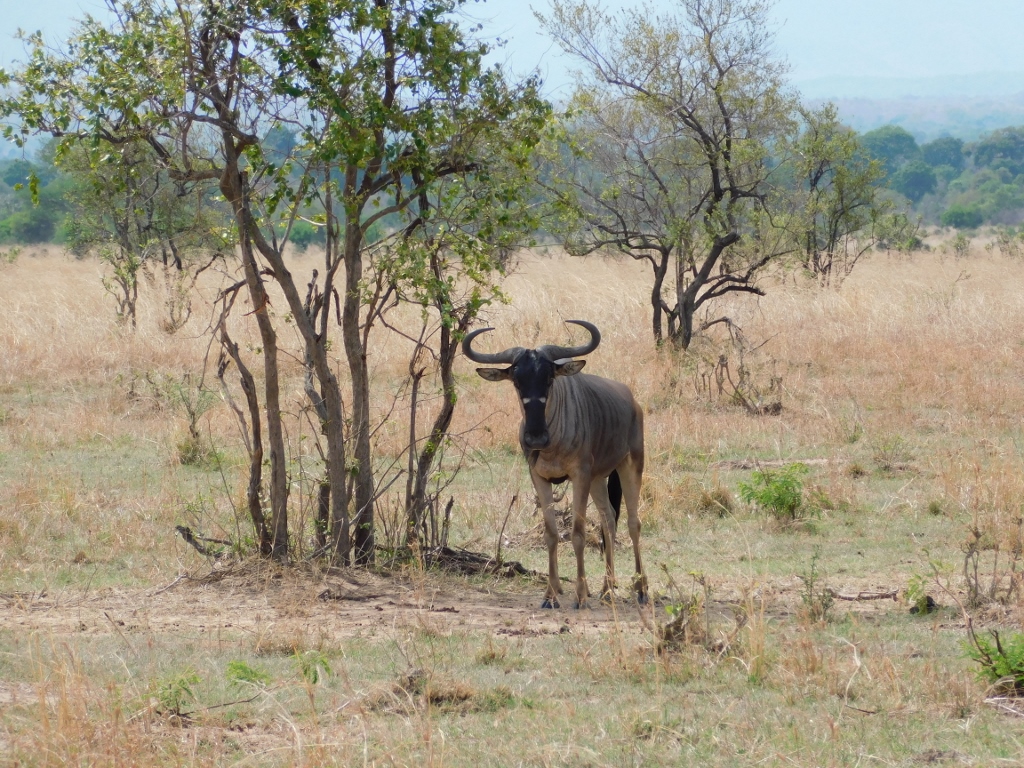 Wildebeest in the Mikumi NP
Wildebeest in the Mikumi NP
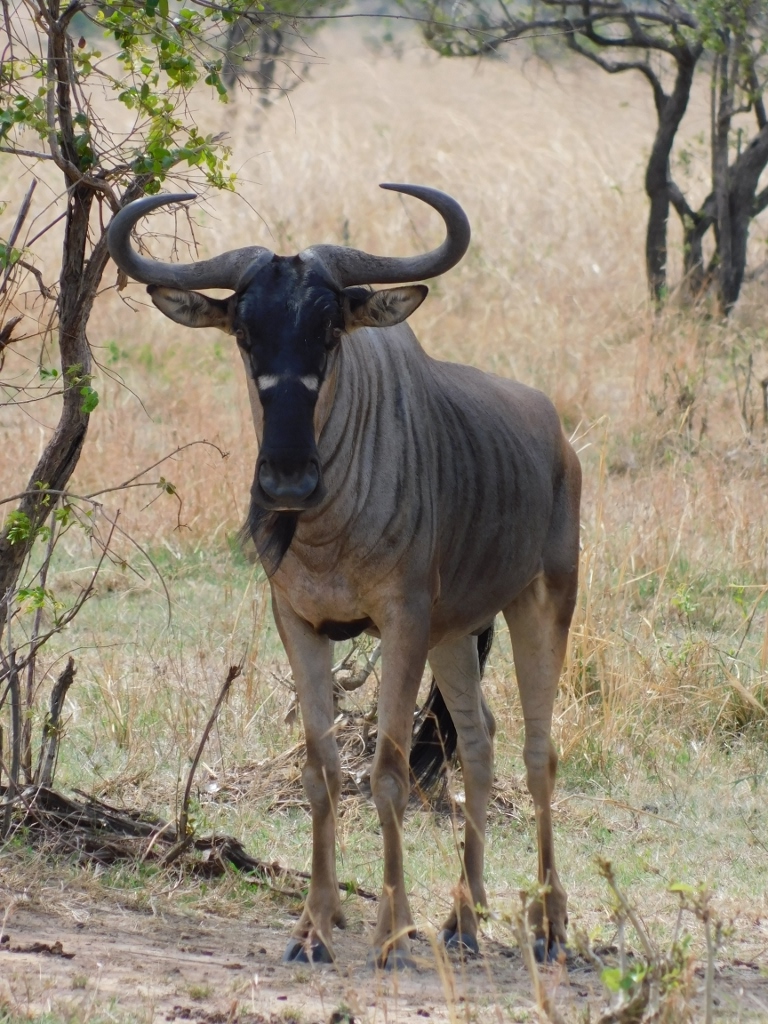 Wildebeest in the Mikumi NP
Wildebeest in the Mikumi NP
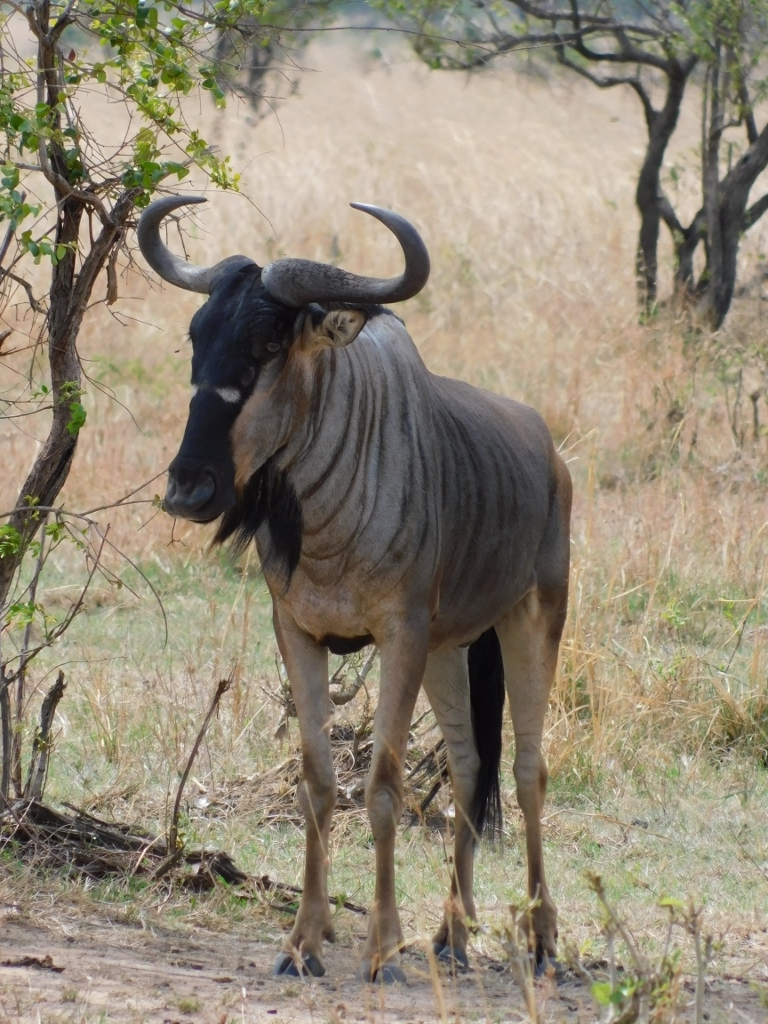 Wildebeest in the Mikumi NP
Wildebeest in the Mikumi NP
There are two types of wildebeests and this one was the so-called blue wildebeest (Connochaetes taurinus).
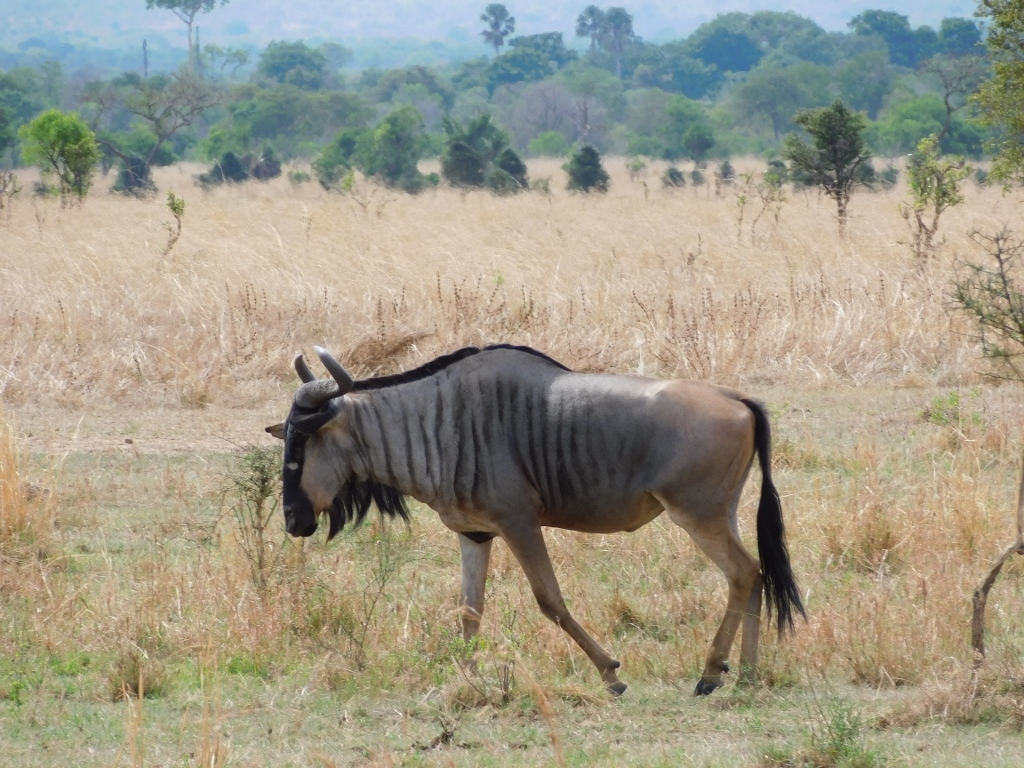 Wildebeest in the Mikumi NP
Wildebeest in the Mikumi NP
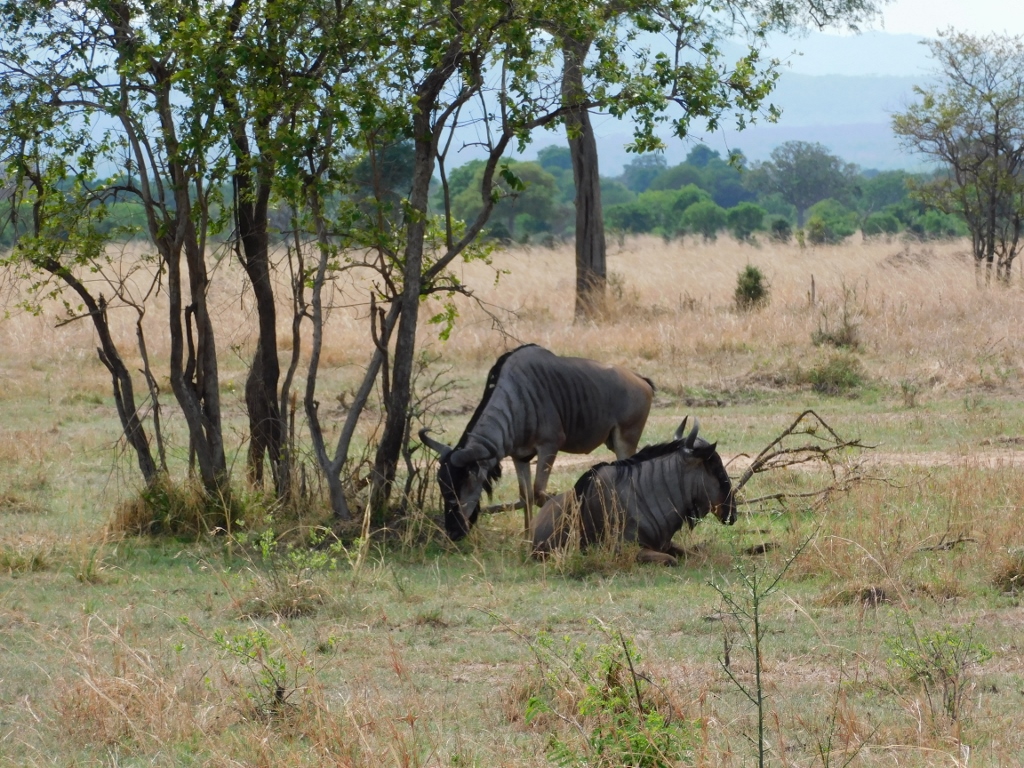 Wildebeests in the Mikumi NP
Wildebeests in the Mikumi NP
After stopping for a short time near the wildebeests in order to take photos, we moved on and soon we saw some birds walking on the ground again. That’s how I took photos of a juvenile palm-nut vulture (Gypohierax angolensis), as well as a wonderful southern ground hornbill (Bucorvus leadbeateri).
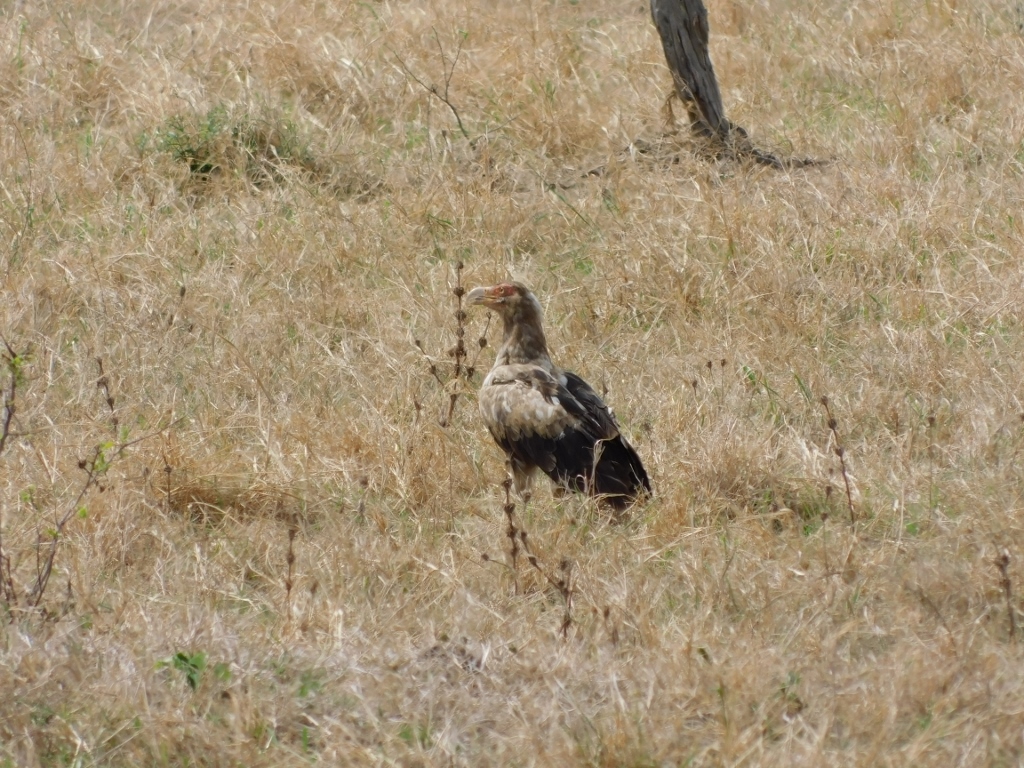 Palm-nut vulture
Palm-nut vulture
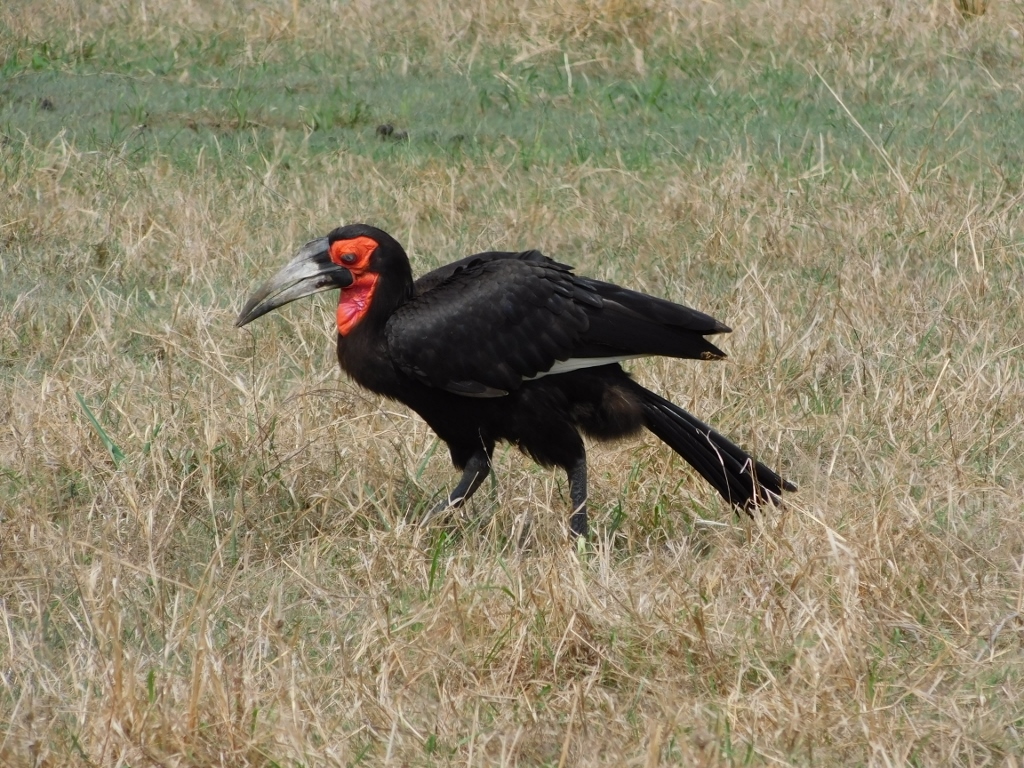 Southern ground hornbill
Southern ground hornbill
By the way, the southern ground hornbill is a really big bird and it is hard for the visitor not to notice it. Its average length is about 1 m and its weight is about 4 kg.
And while these birds were walking on the ground, several nests could be seen on a tree. I don’t know if the owners were at home or if they were also chasing worms or corpses around the savannah.
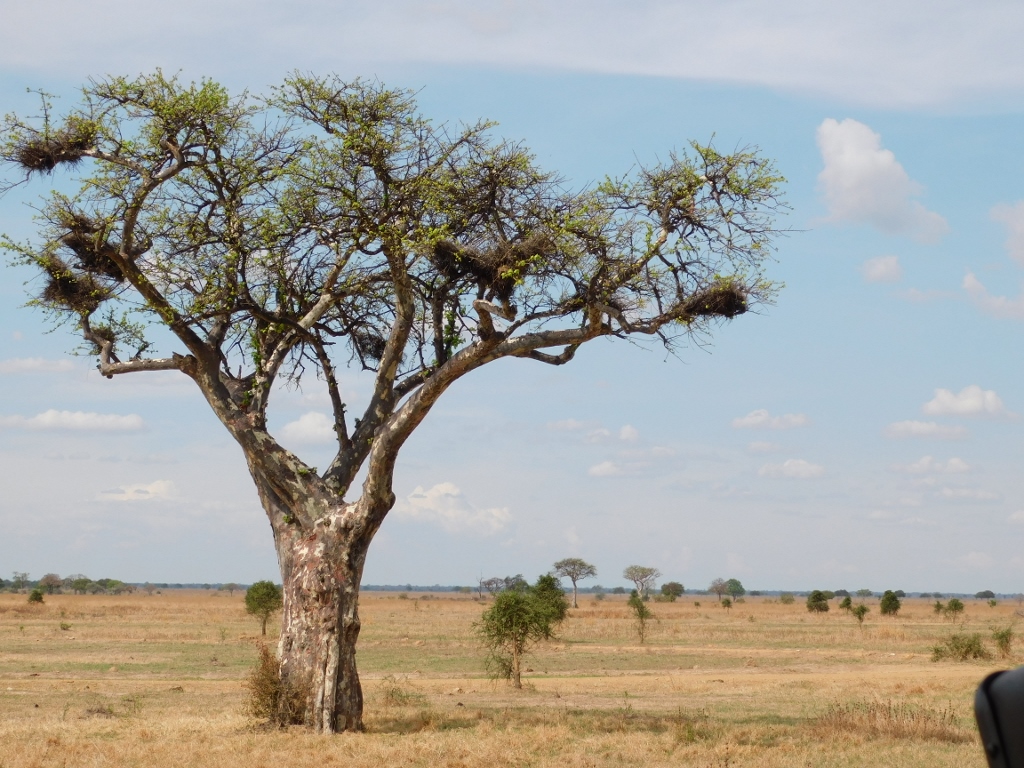 Mikumi NP
Mikumi NP